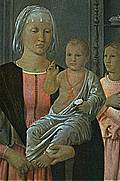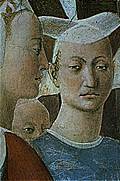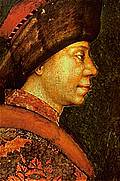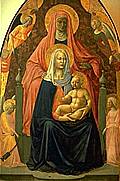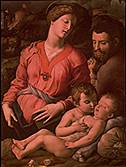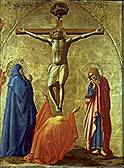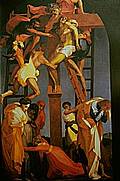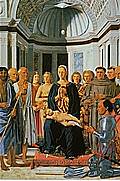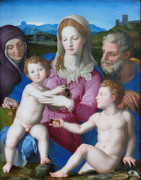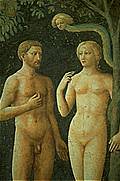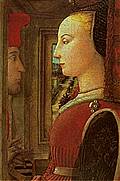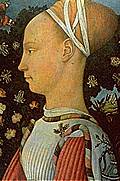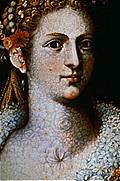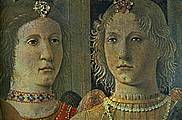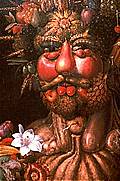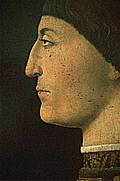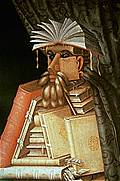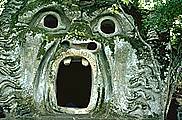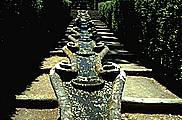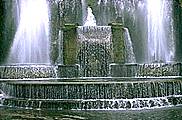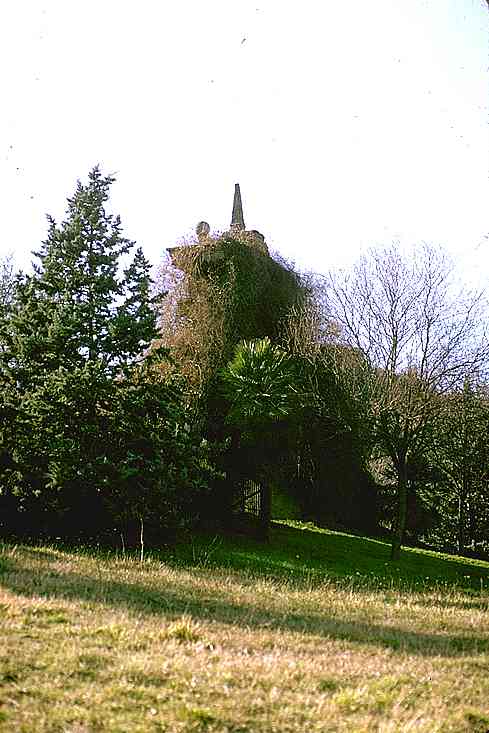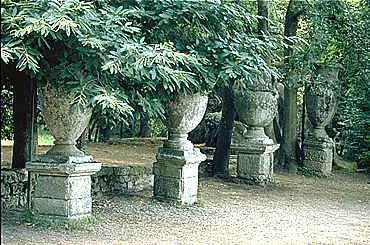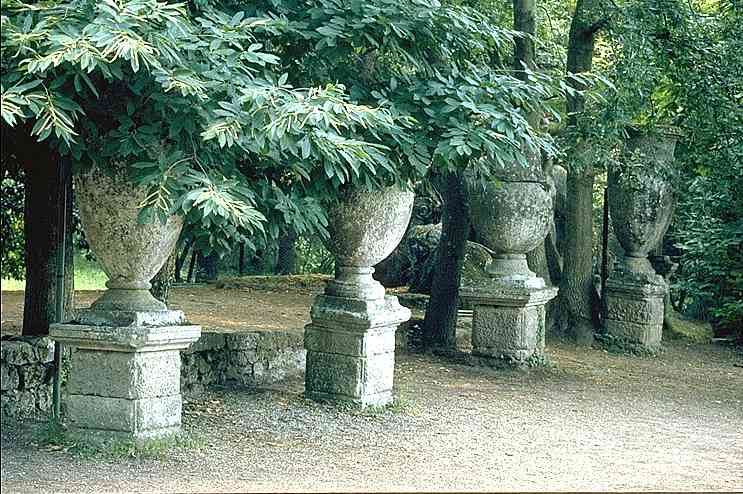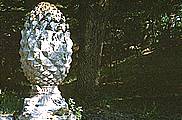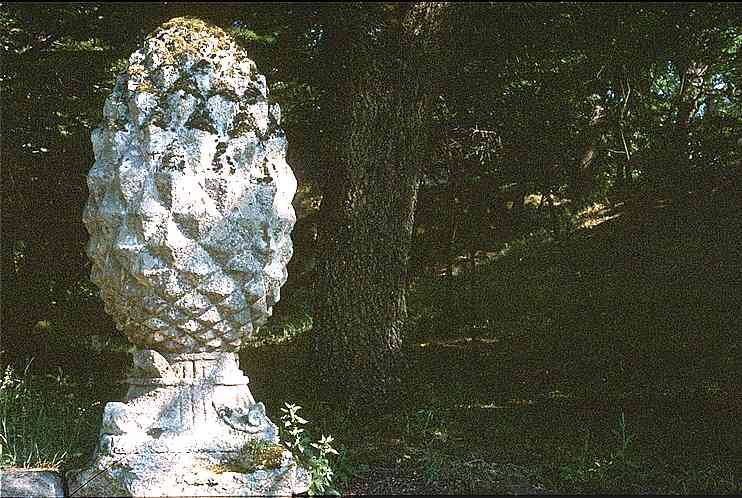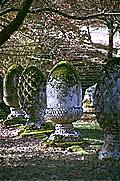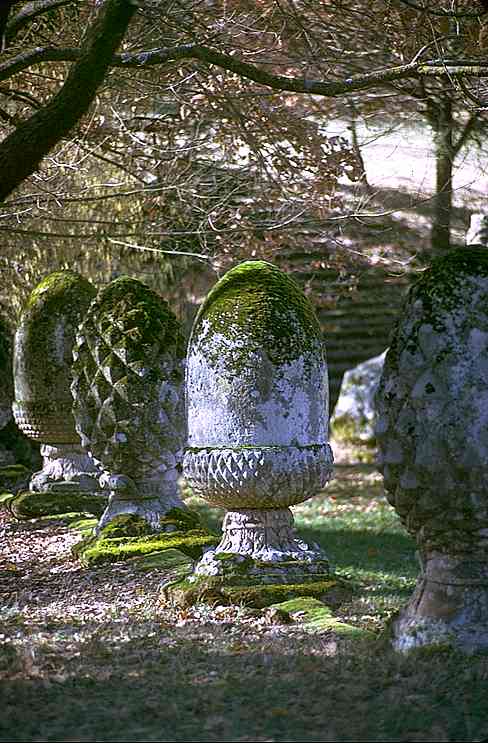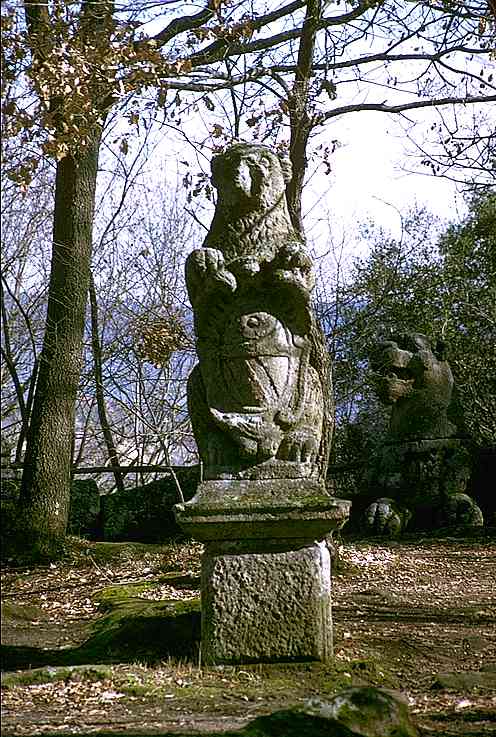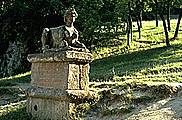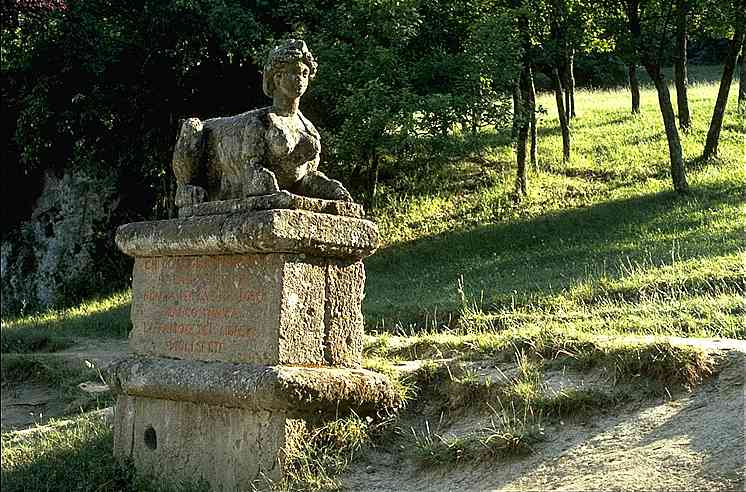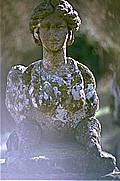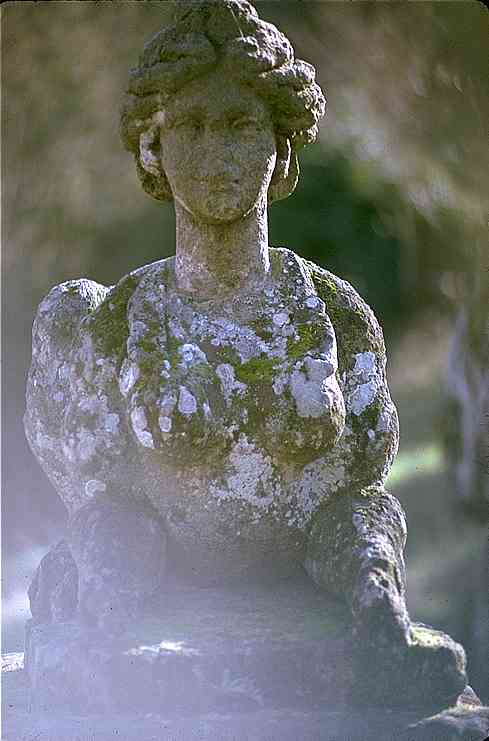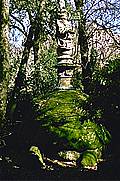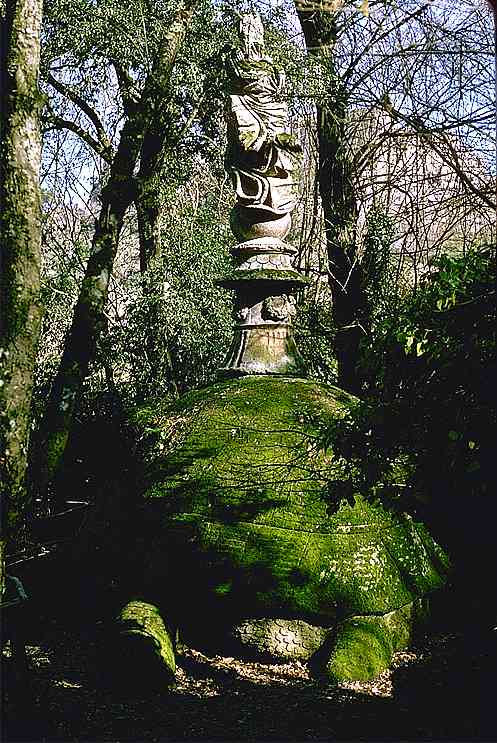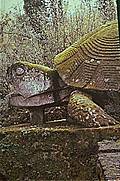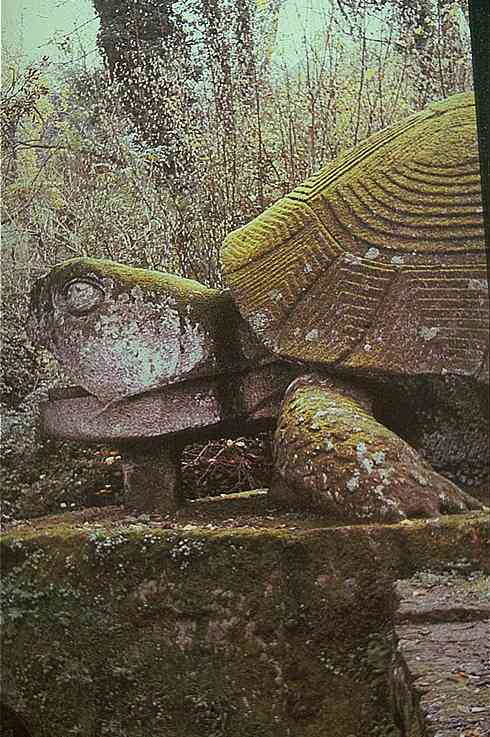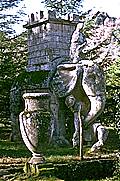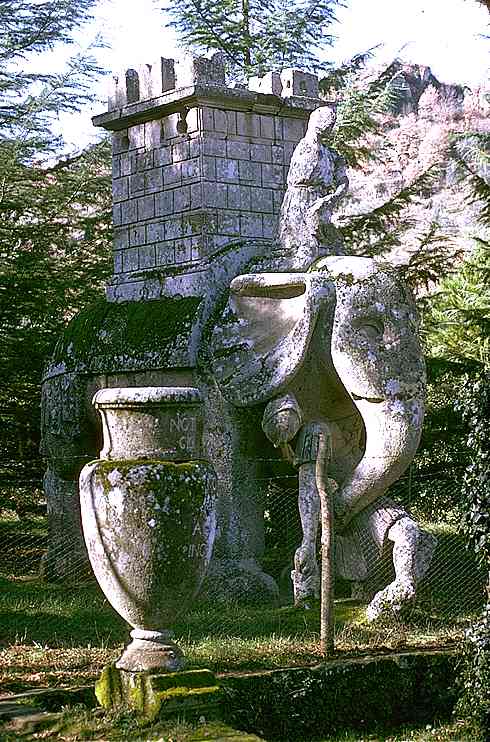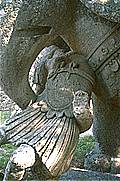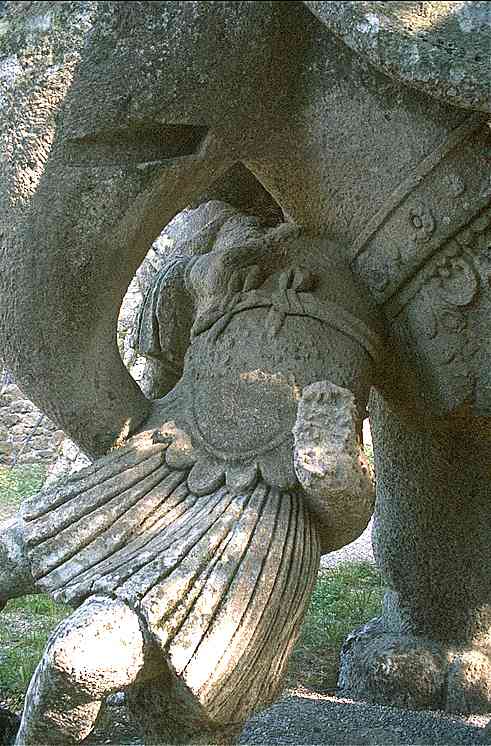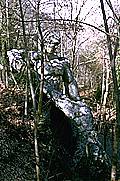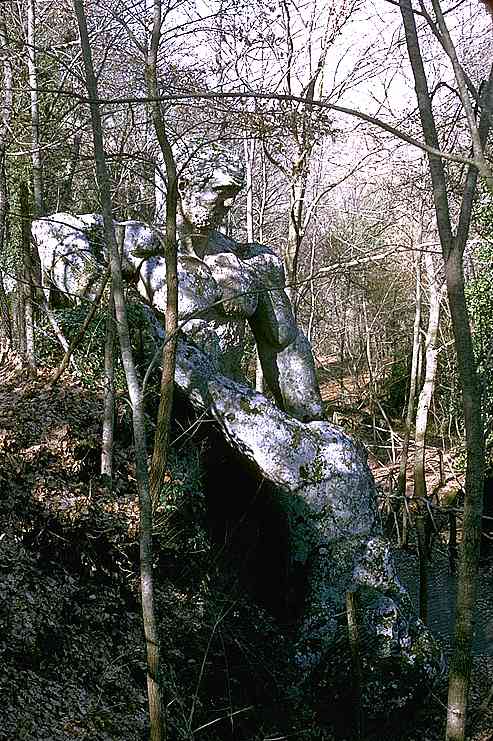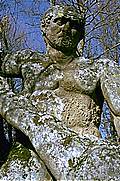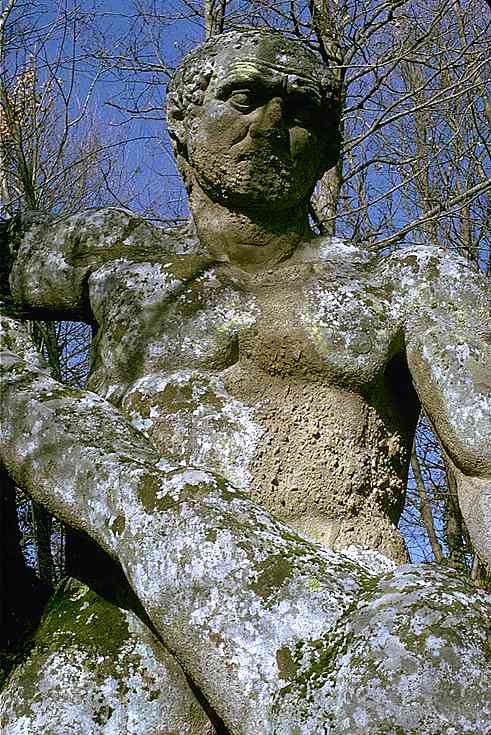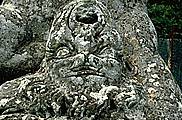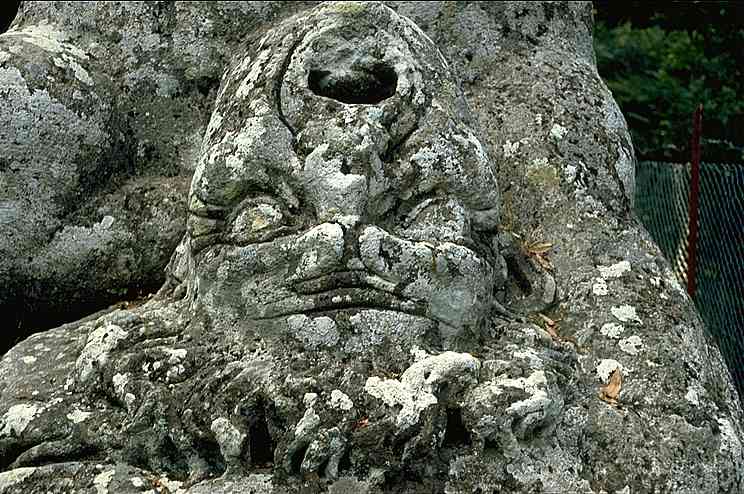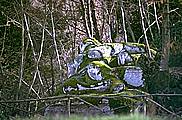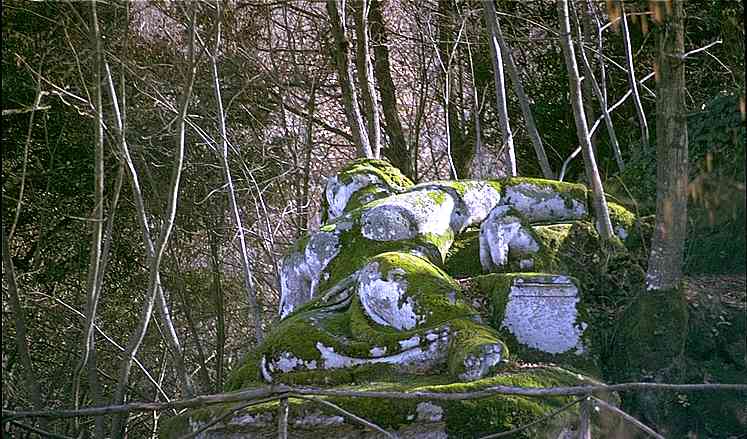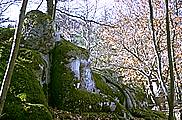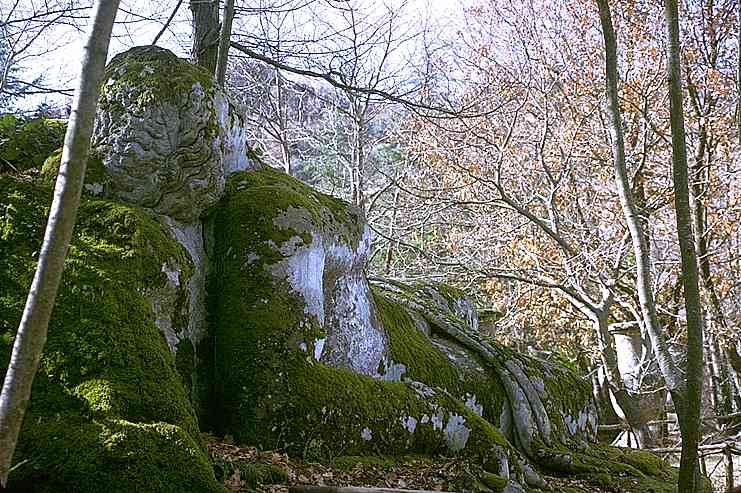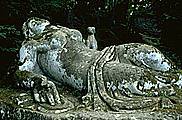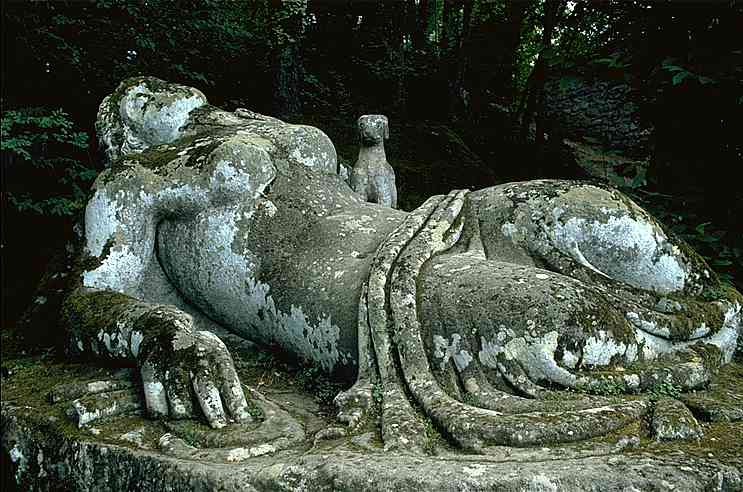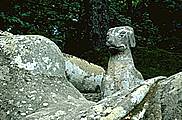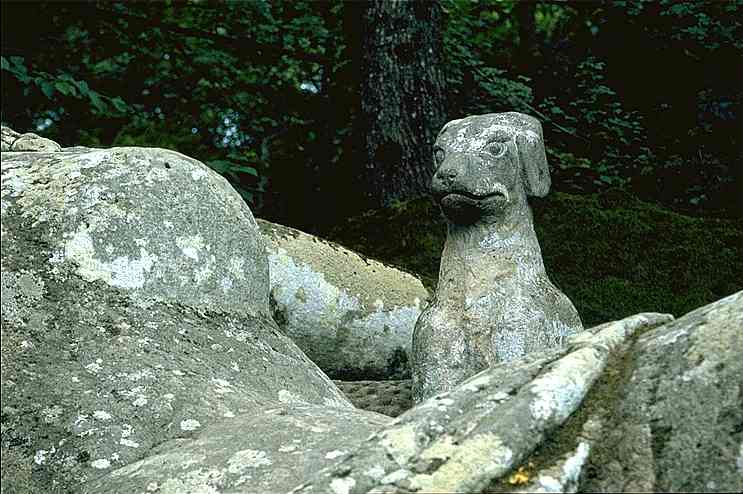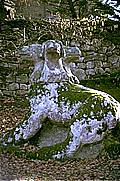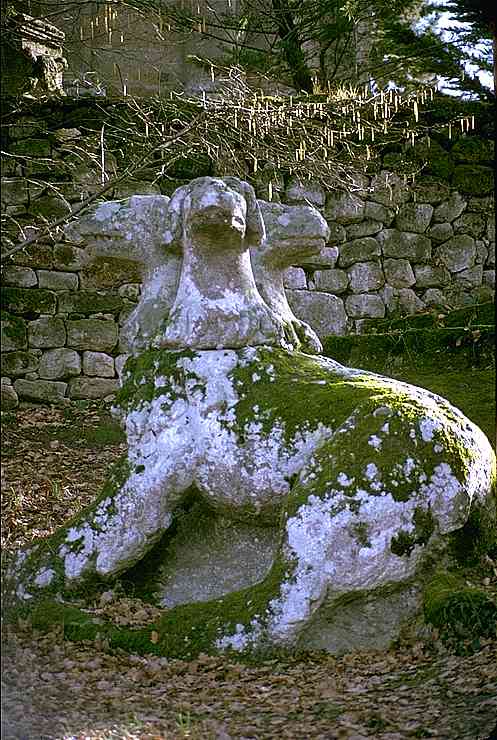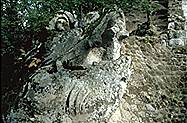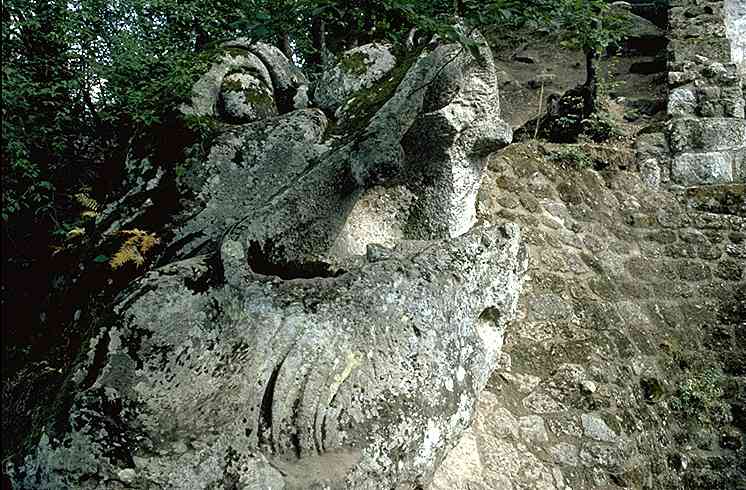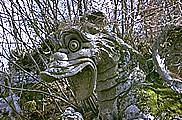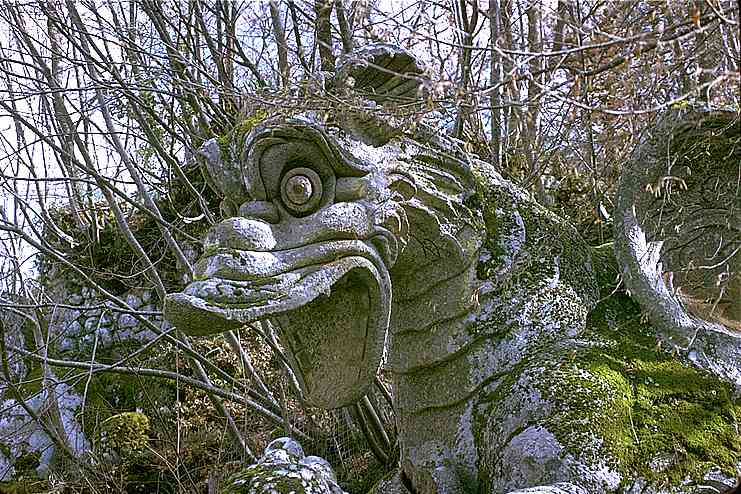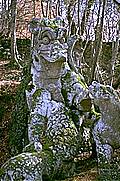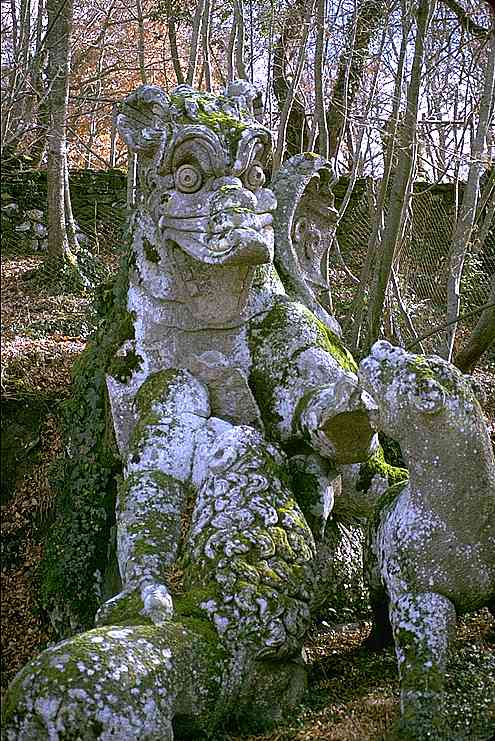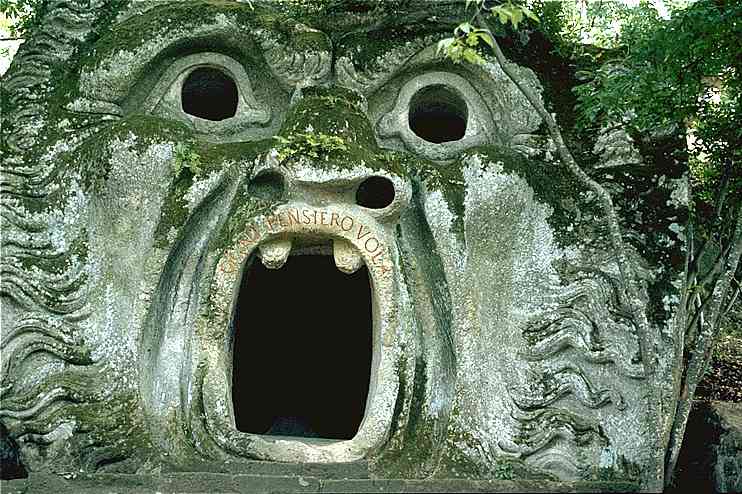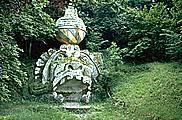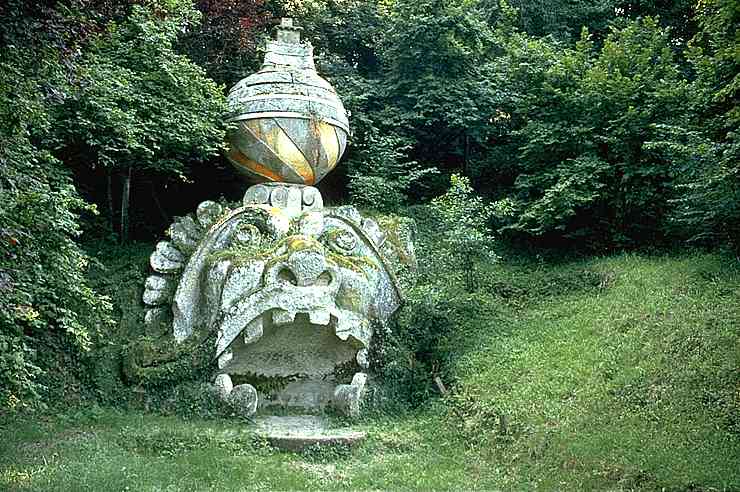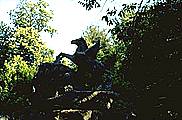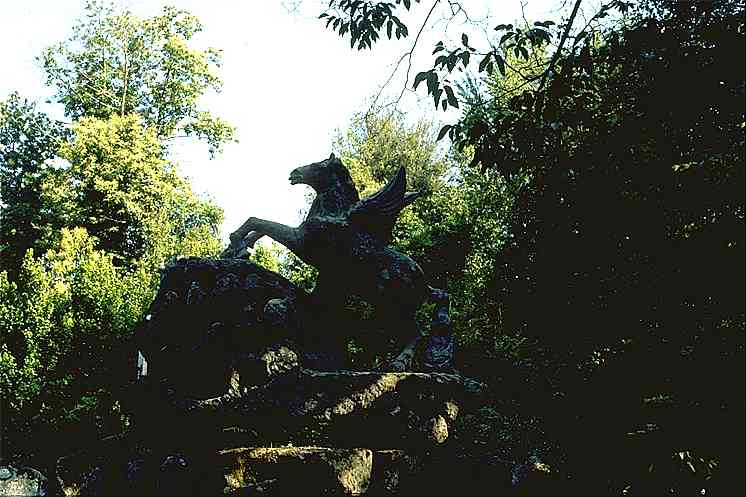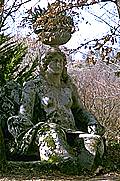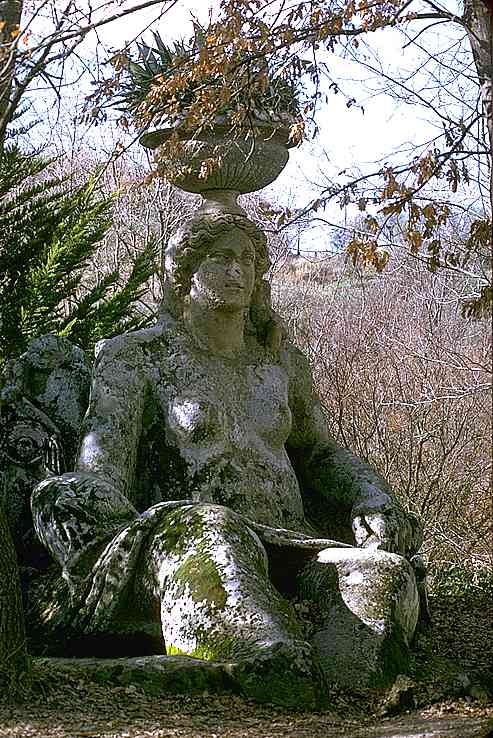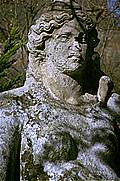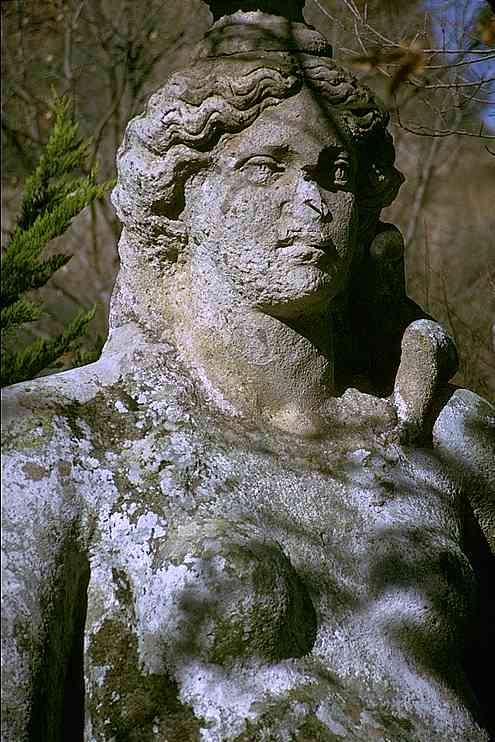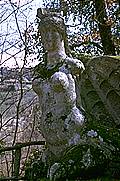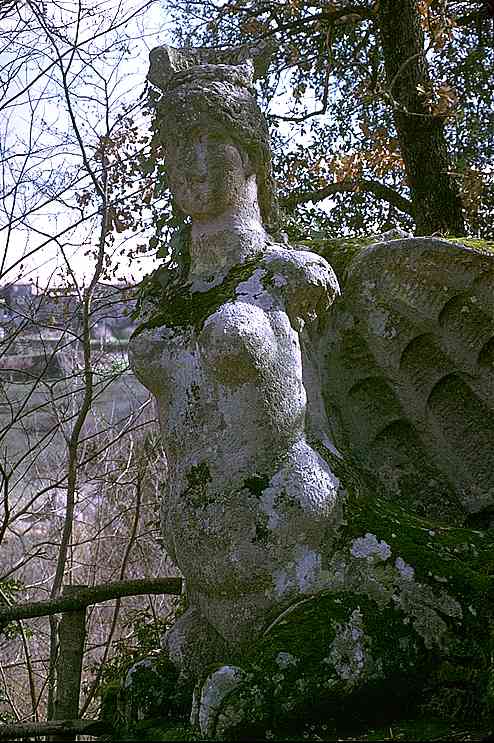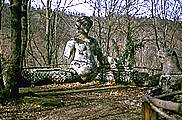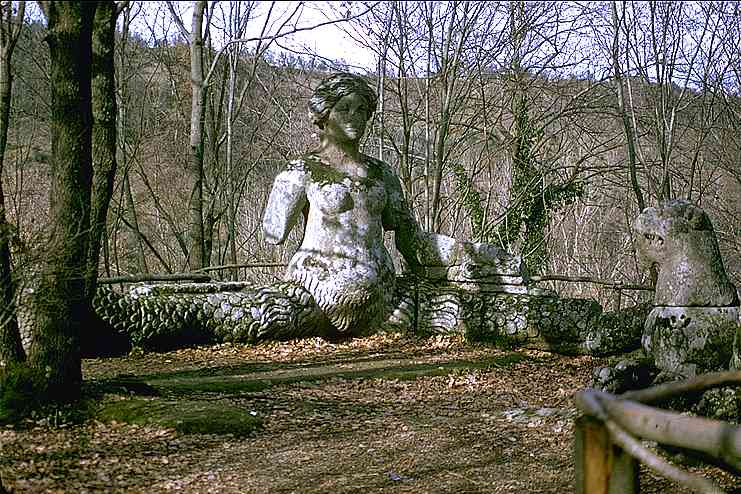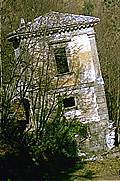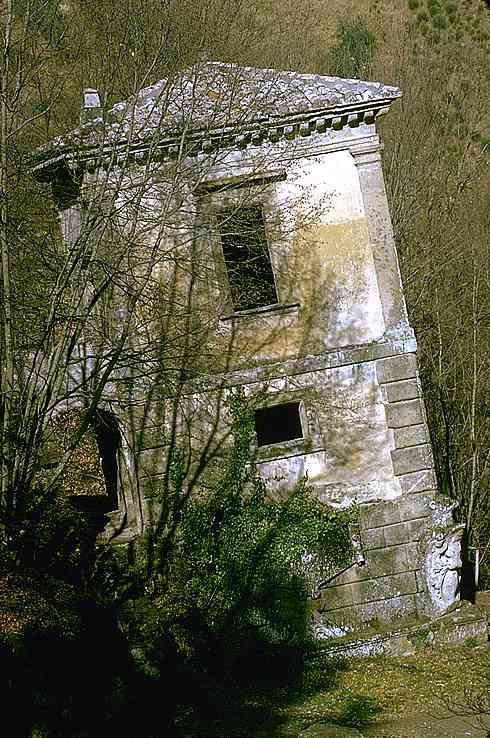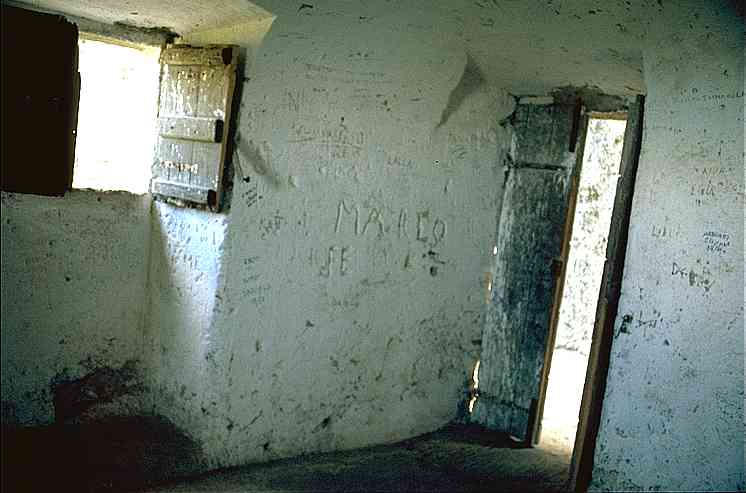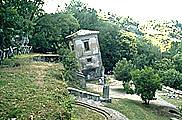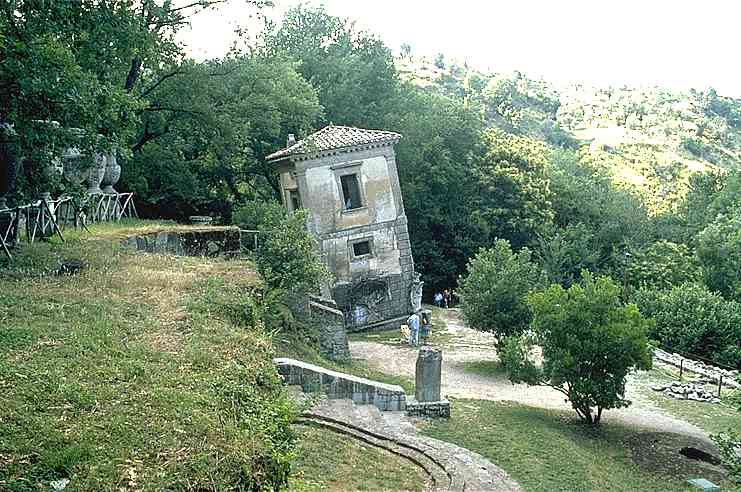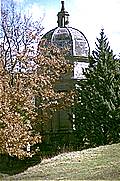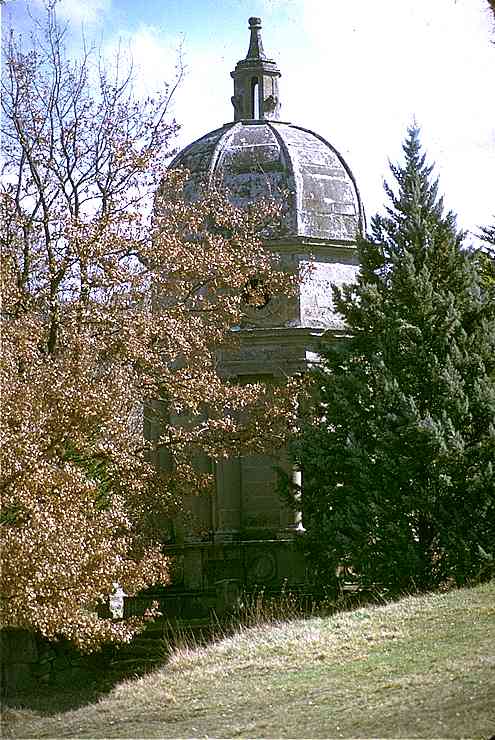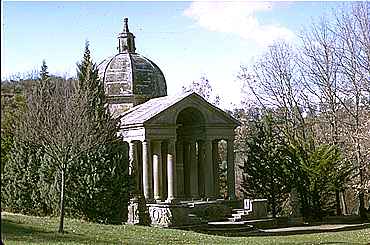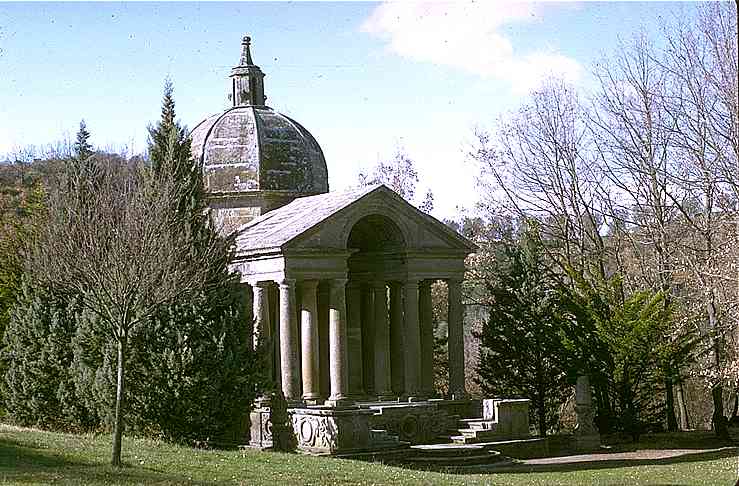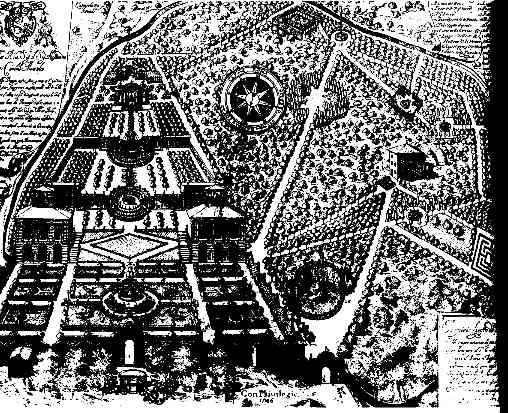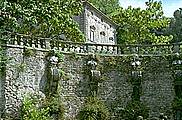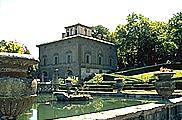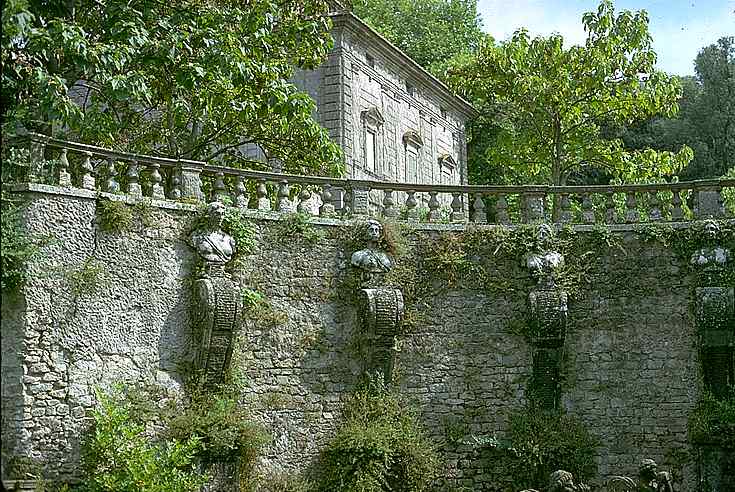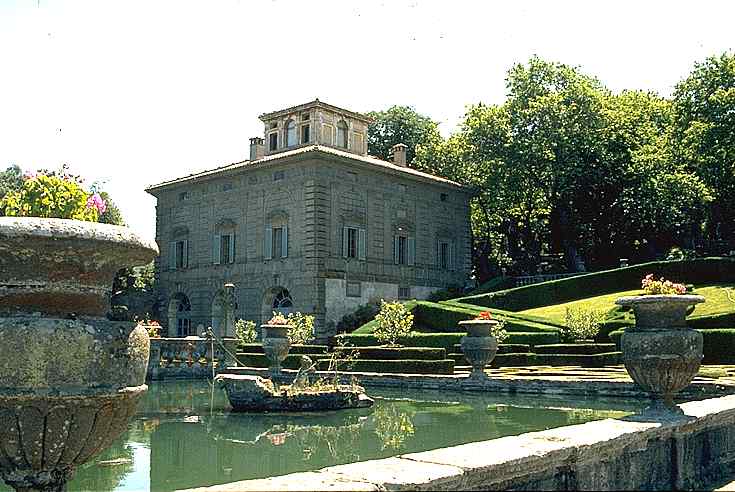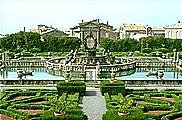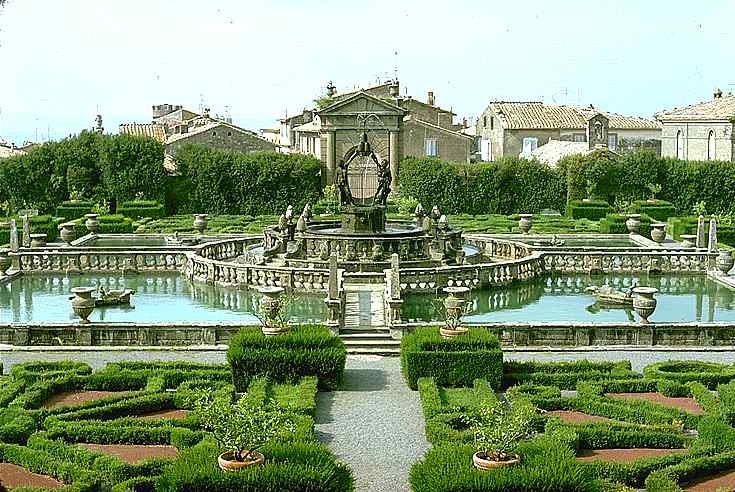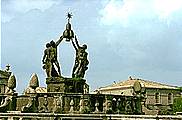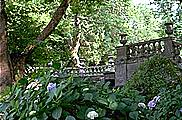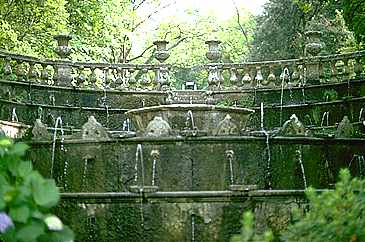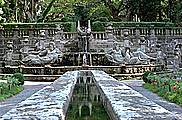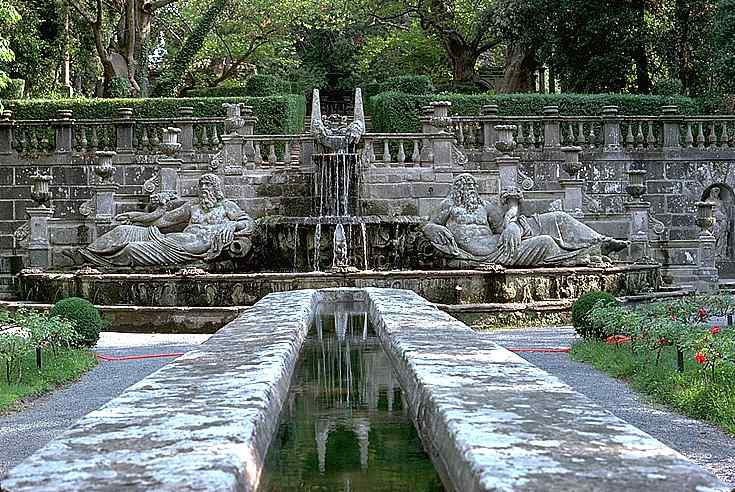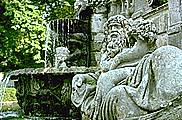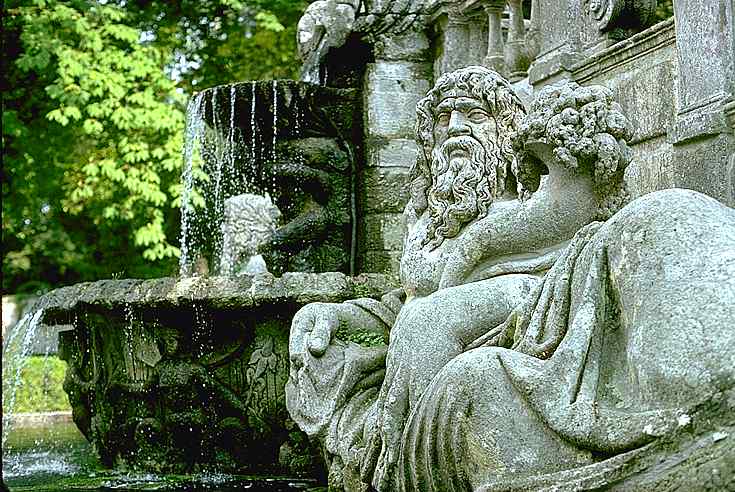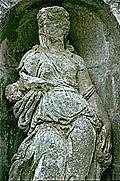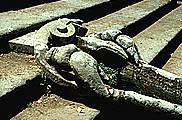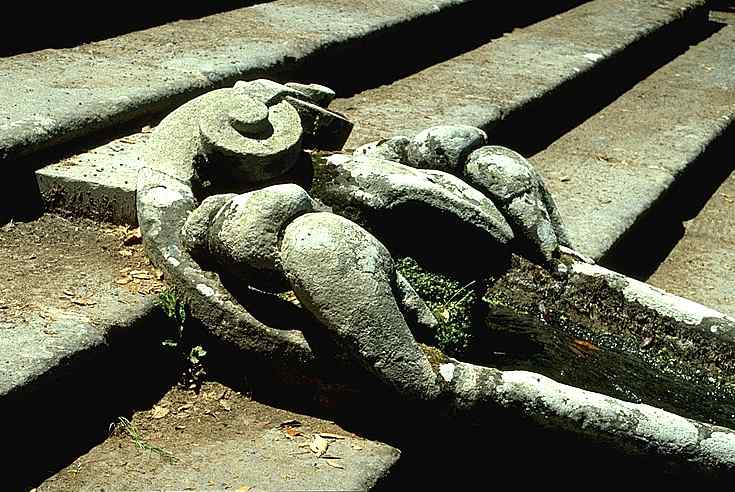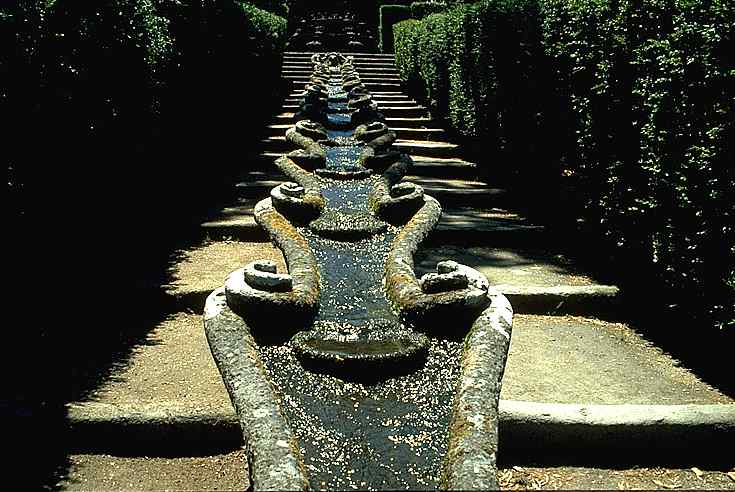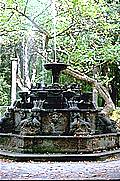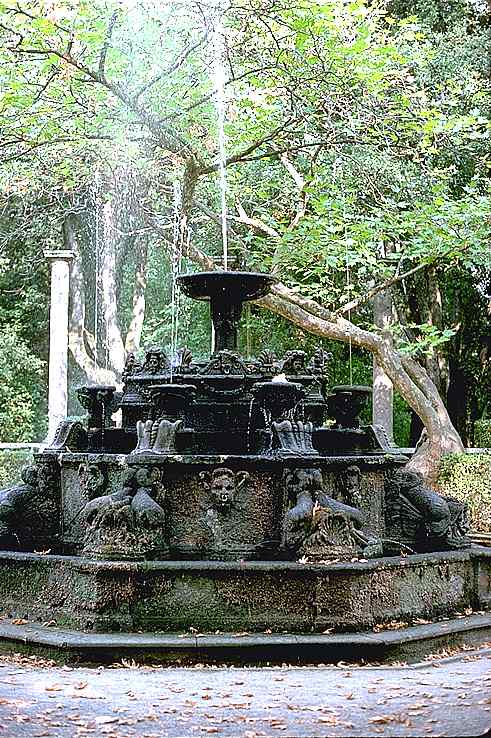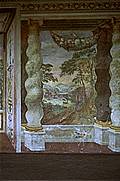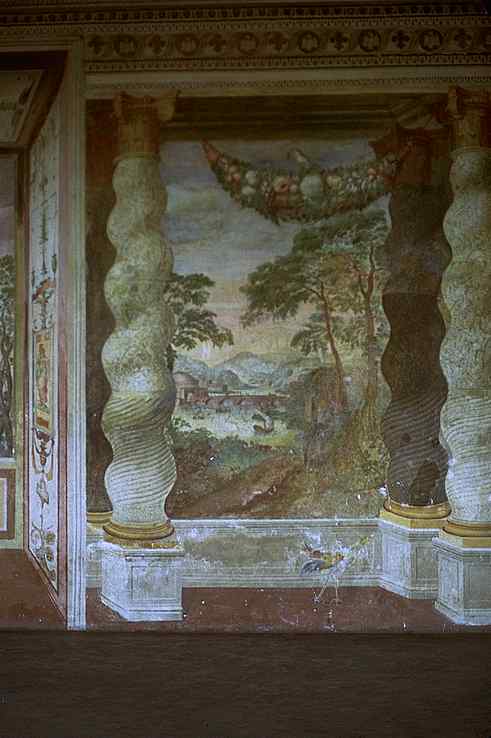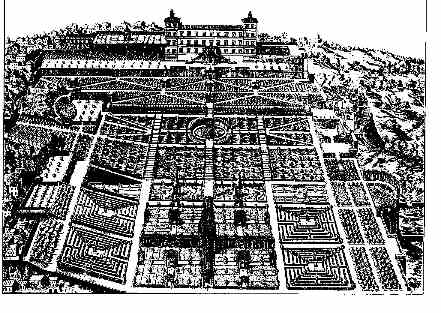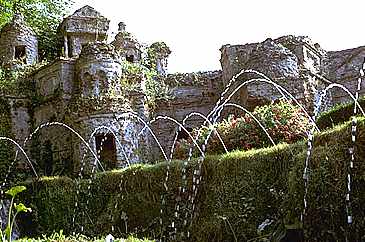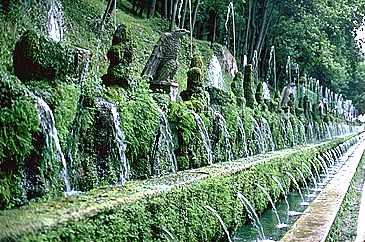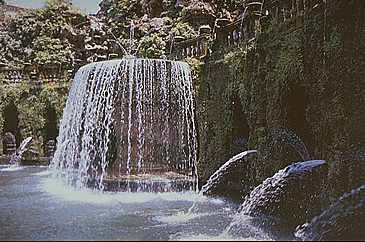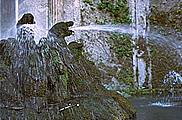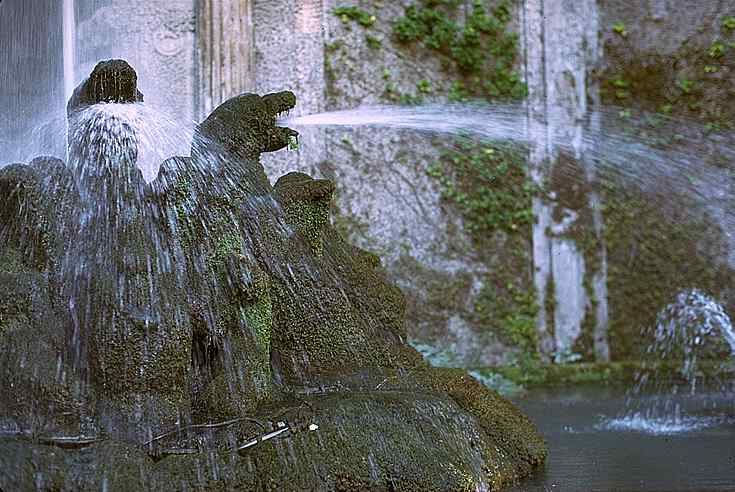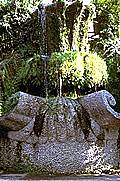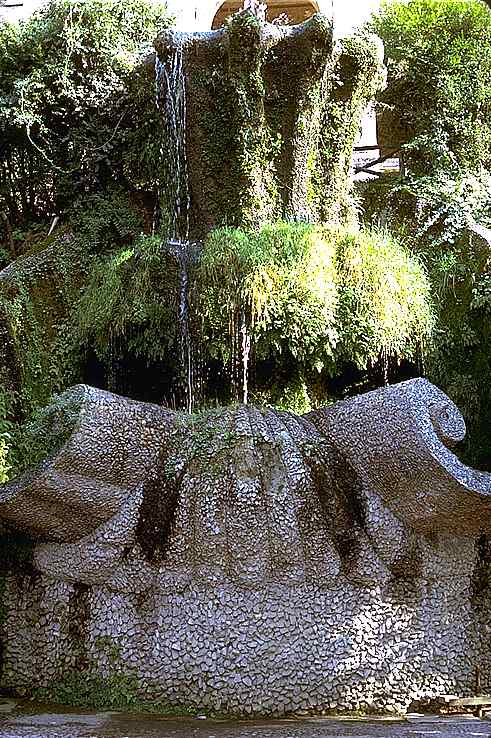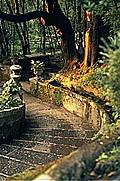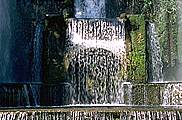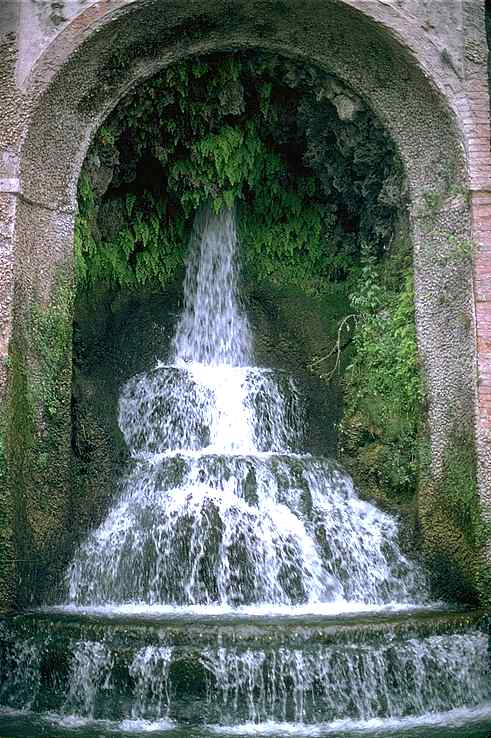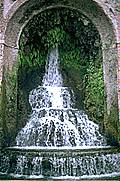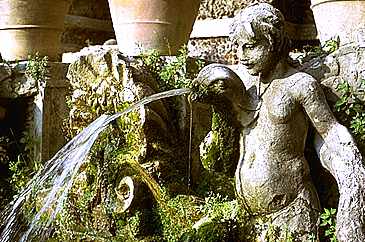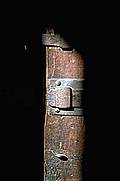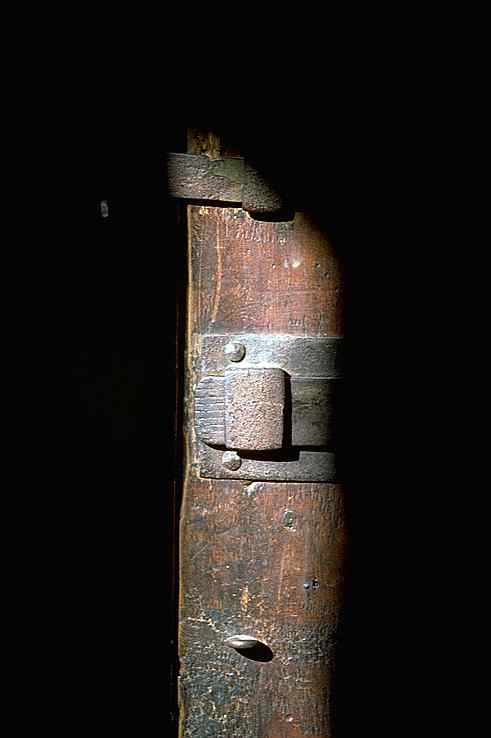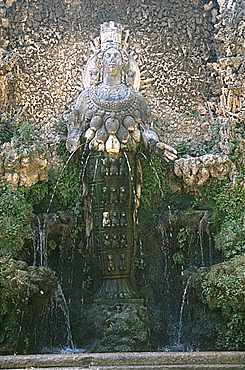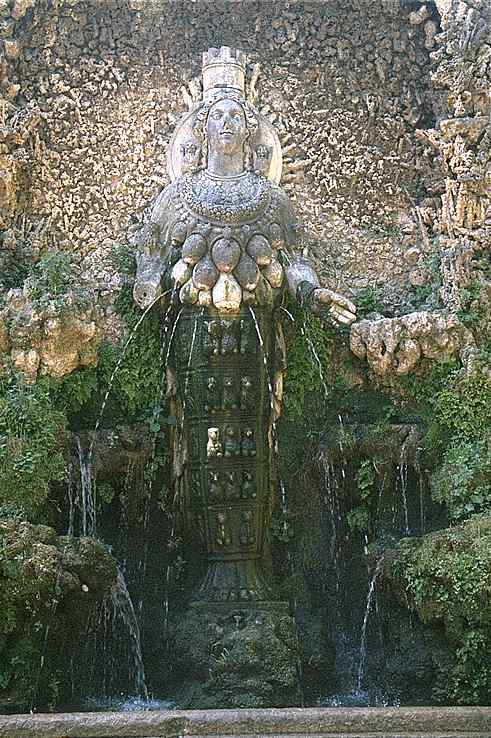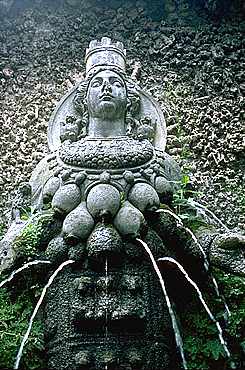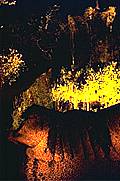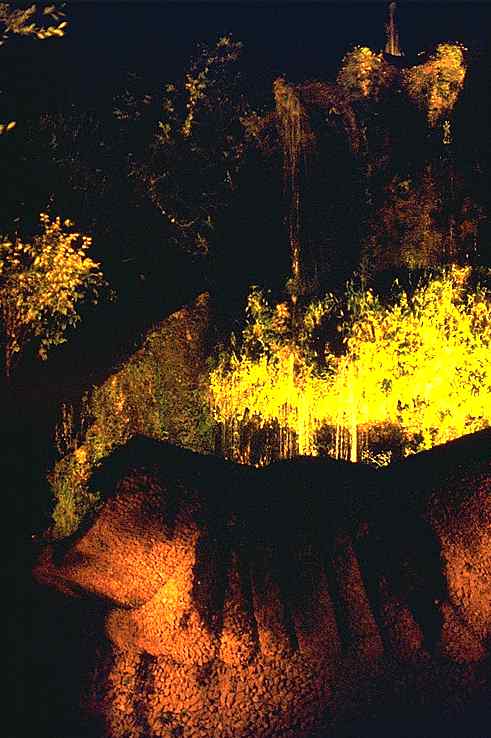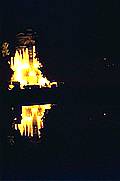Since man has existed, and, one might almost say, before man existed, there have been gardens.
I will refer only to the Garden of Eden which was, after all, the place in which man was born. It existed even before Adam and Eve came into the picture. One has heard of the gardens of Semiramis and the famous Hanging Gardens of Babylon.
There are traces of an Egyptian Pharaoh's garden. It was the one designed by the Pharaoh Tutmosis III within the temple complex at Karnak. More recently, literature speaks of the splendors of the gardens of the Tivoli patrons, contemporaries of the emperor Nero. From a point of view of taste, they were considered to be the grandest, most beautiful and noblest that could be imagined. This caused a jealous Nero to have even more beautiful ones designed. They adorned the Domus Aurea. They were located under the present day parking lot at the Colosseum. You have certainly heard of the gardens that the Empress Theodora had designed for her husband, Justinian, in Byzantium.
The monastery gardens of our grand 12th, 13th and 14th centuries were the preferred resting places of the Virgin. Known as Ortus Conclusus, the enclosed garden sheltered the miracle of the incarnation itself. Even more recently, the gardens at Versailles, Schönbrun, Charlottenburg and Nuremberg were high points of garden art. As you have probably noticed, I have only spoken about Western gardens. I have omitted those of China, Japan and Moghul India.
Wherever man exists, he finds the need to redesign, to recreate the world. A more beautiful world, purer, sweeter smelling and more colorful. A garden is probably the spot where the hopes for civilization are best captured. In fact, man defines himself by his garden. A garden's purpose changes from place to place, from civilization to civilization.
As its name indicates, the Re-nascence was a new birth. Evidently, this new birth essentially related to societies, those of Florence, Bologna and Urbino suddenly, "ex-machina," discovering the beauty and genius of life in the Greco-Roman antiquity and wanting to imitate it. For a long time, for all of us, the Renaissance was a moment when men began to dream of a time which had passed some fifteen hundred years earlier. In the 19th century, and for many of us in the 20th century as well, the Renaissance was nostalgic, a retreat into the past, a moment in time when one dreamed of being something of an Athenian or something of a Roman at the time of the Republic and the Caesars.
Then, a new interpretation of the concept was raised: These were people who, by means of extraordinary discoveries, did a fabulous job of expanding their culture's horizons, both geographical discoveries of which we all know and scientific discoveries. They took refuge in these discoveries, which became the world's -- life's -- new framework. This was not a retreat into the past, but a rush into the future, that is, a denial of their own era.
The two definitions of the Renaissance accepted today -- the retreat into the past and the imitation of Antiquity and a rush forward and this applied futurology -- are too restrictive. They should both be kept, one in the left eye and one in the right eye, in order to adopt a third definition which I shall offer you.
The Renaissance was a critical moment when, on the one hand, a better knowledge of the past and, on the other, a fanatical interest in the present as well as the future, made it possible for society to dream that a man could become a genius. I would call the Renaissance a time of transcendence. A time when an entire society believed and put all its energy and faith to work on man's capacity to better himself. A state of transcendence, a dream state, which is thus a state of Utopia.Transcendence at the human level. Man must be, and this was put forth by Marsilio Ficino, as well as Pico della Mirandola, as well as Politian: Man must be a pure soul, a transparent, elevated soul and served by a body which is pure and healthy.
Not only must man better himself, become a sort of hero, but the society itself, that is, the constitution of these men-heroes, must become a super-society. It must be harmonious, balanced and, above all, it must be conscious of its responsibilities.
A work of art that is an admirable symbol of this Utopian society of the 15th and 16th centuries: Raphael's School of Athens

 In the center of the composition are two characters. One, Plato, raising his finger to the sky, holding one of his last dialogues, The Timaeus, in his hand. The other, Aristotle, lowering his hand to the earth, holding Ethics in his hand.
In the center of the composition are two characters. One, Plato, raising his finger to the sky, holding one of his last dialogues, The Timaeus, in his hand. The other, Aristotle, lowering his hand to the earth, holding Ethics in his hand.

They represent two paths, two approaches: Plato, going from reality to the Ideal, from earth to the philosophical ideal, and the other, Aristotle, showing the philosophical ideal which can only exist in his illustration of thisworld. Transcendency and immanence are represented through these two characters. Around them, Raphael has gathered the great thinkers of all times. Especially those from Antiquity, giving them the faces of some of his contemporaries.
 Without going into detail, let us look at some of the important characters. Heraclitus, Diogenes, disregarding everything and disregarded by all. Socrates, perfectly recognizable by his satyr's face, surrounded by Alexander the Great, Alcibiadies and other disciples. Euclid, with Bramante's face, giving a mathematical demonstration along with Zoroaster, who mastered the knowledge of the sky, and Ptolemy, who mastered the knowledge of the earth. On the left, Averroes, recognizable by his white turban, who introduced our world to Eastern knowledge. In the foreground, Pythagoras and Anaxagoras of Miletus, then a florid Epicurus, crowned with vines. Each one of them represents an encyclopedia of knowledge, in which Raphael has not forgotten himself. He is at the far right, dressed in black, accompanied by a young man dressed in white, Sodoma, the painter. Raphael pays homage to Michelangelo and Leonardo da Vinci by giving their features to Heraclitus and Plato.
The most brilliant part is the architecture at the top of the work, which is completely due to Bramante. These are exactly the same coffers as the ones which Bramante was raising in the new Saint Peter's Basilica, which was then taking form.
Without going into detail, let us look at some of the important characters. Heraclitus, Diogenes, disregarding everything and disregarded by all. Socrates, perfectly recognizable by his satyr's face, surrounded by Alexander the Great, Alcibiadies and other disciples. Euclid, with Bramante's face, giving a mathematical demonstration along with Zoroaster, who mastered the knowledge of the sky, and Ptolemy, who mastered the knowledge of the earth. On the left, Averroes, recognizable by his white turban, who introduced our world to Eastern knowledge. In the foreground, Pythagoras and Anaxagoras of Miletus, then a florid Epicurus, crowned with vines. Each one of them represents an encyclopedia of knowledge, in which Raphael has not forgotten himself. He is at the far right, dressed in black, accompanied by a young man dressed in white, Sodoma, the painter. Raphael pays homage to Michelangelo and Leonardo da Vinci by giving their features to Heraclitus and Plato.
The most brilliant part is the architecture at the top of the work, which is completely due to Bramante. These are exactly the same coffers as the ones which Bramante was raising in the new Saint Peter's Basilica, which was then taking form.
It must have been phenomenal to have Michelangelo, painting the Sistine Chapel, Bramante, raising domes and colonnades and Leonardo da Vinci, prowling thecorridors and looking for work, as one's close neighbors. Julius II was a very lucky man.
. A college of geniuses assembles within a marvelously refined architecture, with Plato and Aristotle presiding in the center: transcendence and immanence. This is the image of Utopia which Raphael conceived for the Popes.
Three of the most beautiful Mannerist gardens in Italy:



 Portrait d'Eléonore de Tolède
Portrait d'Eléonore de Tolède


 She constantly imagined herself dead and wanted to be painted as a corpse in her coffin. She died of a fever, as did most of the Medicis, before reaching the age of forty. The extraordinary thing is that in 1982, twenty years after Chastel's statement, Florence opened the Medici tombs and was stupefied to discover that Eleanor of Toledo had been buried in that same dress. Her embalmed body and her gown with the chain around her waist were found in a fabulous state of preservation. The incredible pearl necklace was not there. These are the famous Medici pearls which were later worn by all those women whose lives ended badly, including Marie-Antoinette. The pearls are cursed...
She constantly imagined herself dead and wanted to be painted as a corpse in her coffin. She died of a fever, as did most of the Medicis, before reaching the age of forty. The extraordinary thing is that in 1982, twenty years after Chastel's statement, Florence opened the Medici tombs and was stupefied to discover that Eleanor of Toledo had been buried in that same dress. Her embalmed body and her gown with the chain around her waist were found in a fabulous state of preservation. The incredible pearl necklace was not there. These are the famous Medici pearls which were later worn by all those women whose lives ended badly, including Marie-Antoinette. The pearls are cursed...


 Bronzino - Cosme Ier de Médicis - Musée des Offices
Bronzino - Cosme Ier de Médicis - Musée des Offices




This is an extraordinary portrait. Let's look at the details. The shoulder, the elbow hinge. He succeeds in portraying the blurriness of the engraving under the elbow, due to the metal's wear and, most of all, in contrast, the completely feminine hand, which shows or betrays Cosimo's true nature, which included an unbelievable temper, unbelievable will power andabsolutism and, from time to time, monstrous cowardice and hypocrisy, animal-like in nature. Il Bronzino betrayed the model's secret nature, usingonly the hand resting on steel.






 Bronzino - La Déploration sur le Christ mort -
Musée des beaux-arts et d'archéologie de Besançon
Bronzino - La Déploration sur le Christ mort -
Musée des beaux-arts et d'archéologie de Besançon




Il Bronzino's Deposition is practically a Pietà. Christ lies inthe arms of the Virgin Mary, surrounded by characters who have taken part inthe story and angels. A painting in which Il Bronzino shows his taste for very strict composition; a magnificent line snakes through the whole work, to the very top, and a counterstroke endows this composition with balance and serenity. The details are very beautiful. In particular, one of the three Marys with this extraordinary jeweled gorget which resembles a shackle. The most beautiful, Mary Magdalene, with an extravagant hairdo and a face of nearly sculptural purity of line, an impression due to the coldness of the skin tones. The strangest character is the Angel of Passion, who is holding the blood collected from Christ's wound in his chalice; take note of the brilliance of the eyes, so characteristic of Bronzino, or his curls, which are treated as a piece of gold jewelry. One can feel the need to use impasto to present the reality of a theme in a very curious manner. This is a very immediate, earthy painting. The characters have existence, volume, weight and space. It is fascinating to imagine the conversations which must have taken place between the young Il Bronzino, so close to the subject matter, and Pontormo, more mature, so far from the subject matter but so close to the spirit, and to wonder how they challenged each other to create such diametrically opposed works on the same theme.
JACOPO CARRUCI, known as DA PONTORMO

- Empoli 1494 - Florence 1556.  This deposition is in Florence, in the Santa Felicità church, in the Caponi chapel, where the work is surrounded by the four tondi by his student, Il Bronzino. Pontormo was the painter of the ethereal.Christ's body weighs nothing, the persons supporting him are only standing on one toe. All the drapes were created in order to further increase this visual impression. Pontormo was a visionary, while Il Bronzino was a pragmatic witness of his era. What is a bodily presence for Il Bronzino is, for Pontormo, an absence, a shadow. We shall delve into this work, as the more closely one looks at it, the more one is convinced that Pontormo is one of the strangest painters of his time and one of the most captivating. Christ's face is completely devoid of existence, of any presence. The Virgin's face is washed out by her liquid veil; the veil and the dress are one and the same. The ambiguity has so transformed her into a stream of pain, that one can no longer make out where the dress starts and the flesh ends. Mary Magdalene is more present, but her gaze has an uneasy look to it. Christ's bearers: the one on the far right, in olive and red, the one on the bottom, the only one looking at us; very strangely, he is staring straight at the spectator; the face of the last one, the one holding Christ's right arm, brings that of Christ to mind, younger and again painted with this same feeling of a washed-out brush.
This deposition is in Florence, in the Santa Felicità church, in the Caponi chapel, where the work is surrounded by the four tondi by his student, Il Bronzino. Pontormo was the painter of the ethereal.Christ's body weighs nothing, the persons supporting him are only standing on one toe. All the drapes were created in order to further increase this visual impression. Pontormo was a visionary, while Il Bronzino was a pragmatic witness of his era. What is a bodily presence for Il Bronzino is, for Pontormo, an absence, a shadow. We shall delve into this work, as the more closely one looks at it, the more one is convinced that Pontormo is one of the strangest painters of his time and one of the most captivating. Christ's face is completely devoid of existence, of any presence. The Virgin's face is washed out by her liquid veil; the veil and the dress are one and the same. The ambiguity has so transformed her into a stream of pain, that one can no longer make out where the dress starts and the flesh ends. Mary Magdalene is more present, but her gaze has an uneasy look to it. Christ's bearers: the one on the far right, in olive and red, the one on the bottom, the only one looking at us; very strangely, he is staring straight at the spectator; the face of the last one, the one holding Christ's right arm, brings that of Christ to mind, younger and again painted with this same feeling of a washed-out brush.


 Bronzino - Allegory, known as The Triumph of Venus - London- National Gallery
Bronzino - Allegory, known as The Triumph of Venus - London- National Gallery



 This painting shows Venus being kissed, nearly raped, by her own son, Cupid. Venus is sacrificing herself so that he cannot see the apple which she received from Paris (the beginning of the mythological original sin, as it was the beginning of the Trojan War). She is trying to hide his own arrow, to prevent him from continuing to wreak havoc. The mother is attempting to divest powers from her son, who is becoming too insistent. Around Venus and Cupid, there is a whole series of characters representing thewoes and joys of love. Il Piacere or Pleasure, which Il Bronzino took pleasure inpainting as a Hellenistic dancing satyr. Treachery is hiding behind him, withthe prettiest possible young girl's face, the prettiest little multicoloreddress, but which reveals a snake's tail, as she is, naturally, half snake andhalf woman. In one hand, she holds a honeycomb, in the other, an asp. Pleasureand pain at the same time. The two hands are reversed: her right hand is a lefthand, her left hand is a right hand...
This painting shows Venus being kissed, nearly raped, by her own son, Cupid. Venus is sacrificing herself so that he cannot see the apple which she received from Paris (the beginning of the mythological original sin, as it was the beginning of the Trojan War). She is trying to hide his own arrow, to prevent him from continuing to wreak havoc. The mother is attempting to divest powers from her son, who is becoming too insistent. Around Venus and Cupid, there is a whole series of characters representing thewoes and joys of love. Il Piacere or Pleasure, which Il Bronzino took pleasure inpainting as a Hellenistic dancing satyr. Treachery is hiding behind him, withthe prettiest possible young girl's face, the prettiest little multicoloreddress, but which reveals a snake's tail, as she is, naturally, half snake andhalf woman. In one hand, she holds a honeycomb, in the other, an asp. Pleasureand pain at the same time. The two hands are reversed: her right hand is a lefthand, her left hand is a right hand...
Down to the smallest details, this painting is an ambiguous one. Cupid's andVenus' kiss is extraordinarily physical. The relationship between mother andson is unbelievably present.
 Jealousy is on the left, a horrible old woman
Jealousy is on the left, a horrible old woman




Look at the quality and beauty of the entire work with, as one last detail, the two masks.

A young woman and an old man






 qui soient. Après un séjour à Rome, (1546-48 ), il peint une série d'œuvres religieuses. Entre autre, la Résurrection à l'Annunziata et le Christ aux Limbes, à Santa Croce. Il meurt à Florence en 1572.
, Pontormo, Lotto, Rosso Fiorentino , Giambologna, Arcimboldo, Parmigiano,
Vignola
qui soient. Après un séjour à Rome, (1546-48 ), il peint une série d'œuvres religieuses. Entre autre, la Résurrection à l'Annunziata et le Christ aux Limbes, à Santa Croce. Il meurt à Florence en 1572.
, Pontormo, Lotto, Rosso Fiorentino , Giambologna, Arcimboldo, Parmigiano,
Vignola

 In 1566, Vignola started creating the Villa Lante in Bagnaia (casini,garden and park). But what is considered to be his absolute masterpiece is Il Gesù Church in Rome, which he would build much later.
In 1566, Vignola started creating the Villa Lante in Bagnaia (casini,garden and park). But what is considered to be his absolute masterpiece is Il Gesù Church in Rome, which he would build much later.




In general,these artists were completely ignored by the public. Even the curious public, knowledgeable and erudite, detested them. Time has passed. Idols fall, new values come into play. Raphael was ostracized and, today, is still rather badly viewed. Curiously enough, Il Bronzino, on the other hand, is the subject of research, books and far more numerous exhibitions. Mr. Chastel had the courage to organize this formidable exhibition in the Petit Palais, the Grand Palais and the Louvre simultaneously, bringing together what he was able to obtain from museums in the Netherlands, Italy, England and France. By means of this exhibition and a very thick catalogue, he was able to introduce Mannerism to the general public.
Why Mannerism? When Da Vinci, Michelangelo and Raphael died, Italian society demanded that young artists immemorialize their forefathers' genius and glory by imitating their manners. An imitative style of their manners, from which came the name of Mannerists, which Mr. Chastel bestowed on these young painters who worked from 1530 until approximately 1610 and would only be supplanted by the birth of the Baroque period. Mannerism is the missing link between the Renaissance and the Baroque.
Mannerism requires that its artists create works that enchant, surprise, frighten and unnerve. One should not try to view a Mannerist work in a cold and aesthetic manner.In Piero della Francesca's era and, even more so in Masaccio's, one could admire calmly. A Mannerist viewer cannot keep his calm. He needs the stridency of sound, be it in a burst of laughter, or in the most unbridled, fundamental anguish. He needs to be exacerbated. That is why the bizarre is appropriate in those gardens.
All three are located in the area surrounding Rome. We shall approach these extraordinary properties which the Renaissance princes built first across Italy and then all over Europe. These princes considered these gardens to be far more than valued retreats. It was an opportunity to create a three dimensional initiatory journey through a summary of their century's thinking and a form of synthesis of their era's aspirations. These gardens were of far greater importance than we accord them today.
I shall try to show you that these Italian Renaissance gardens, which appear to be simply pleasure gardens are, in fact, initiatory gardens. I have organized them in a proper initiatory order, starting with the simplest and going to the most complex. At the end of the journey, I hope that you will be sufficiently familiar with this concept of initiation to understand its true impact, its deep significance.

 The Duke of Urbino justifying himself by the vastness of the horizons which he thus seems to rule. The Renaissance prince dips into Nature. Why gardens in particular? A garden can be modeled, it can be manufactured; a garden is thus a form of nature on which man can have an impact. Man sculpts Nature: Man is nearly God's peer. When the Renaissance princes ordered a waterfall here, a mountain there andfacing perspectives, they felt a bit like Jupiter thundering from the top ofthe Sistine Chapel, or, if you prefer, they felt like God the father. We are in an era in which the Prince and God were like twins. The garden was thus a spot which the princes valued highly. A garden offers an adventure, a garden tells a story. This story is highlighted by important moments, in which the genius of science and the marvels of Nature were able to come together. A grotto dedicated to Vulcan allowed a Renaissance prince to exult.
The Duke of Urbino justifying himself by the vastness of the horizons which he thus seems to rule. The Renaissance prince dips into Nature. Why gardens in particular? A garden can be modeled, it can be manufactured; a garden is thus a form of nature on which man can have an impact. Man sculpts Nature: Man is nearly God's peer. When the Renaissance princes ordered a waterfall here, a mountain there andfacing perspectives, they felt a bit like Jupiter thundering from the top ofthe Sistine Chapel, or, if you prefer, they felt like God the father. We are in an era in which the Prince and God were like twins. The garden was thus a spot which the princes valued highly. A garden offers an adventure, a garden tells a story. This story is highlighted by important moments, in which the genius of science and the marvels of Nature were able to come together. A grotto dedicated to Vulcan allowed a Renaissance prince to exult.
Why?
Because it allowed him to keep the gods with him and, as such, to imagine himself to be the gods' equal. The allegorical aspect was very important to many of the garden patrons of that era. As an example, a grotto dedicated to Vulcan had to be picturesque. In order to be picturesque, the strangest and rarest objects had to be collected from around the world and included in the decor. The Renaissance delighted in rare corals, rare shells, anything rare...
After allegory came Science. Then the marvels of human genius were added, ingenuity such as automatons, the sophistication of which never ceased to increase, reaching the point when 10, 15 or 20 figures could be put in motion in the form of tableaux which could be played out in any way the spectator wished.
Allegories, the conjunction of science and pure futurology were the three reasons for which these "fabrications" started appearing in these gardens. They became ever more elaborate, complicated and expensive but, above all, fragile. A few years of neglect were enough to destroy forever the ingenuity of what people of that era had begun to call the engineers of the Renaissance.
Start Here
I will refer only to the Garden of Eden which was, after all, the place in which man was born. It existed even before Adam and Eve came into the picture. One has heard of the gardens of Semiramis and the famous Hanging Gardens of Babylon.
There are traces of an Egyptian Pharaoh's garden. It was the one designed by the Pharaoh Tutmosis III within the temple complex at Karnak. More recently, literature speaks of the splendors of the gardens of the Tivoli patrons, contemporaries of the emperor Nero. From a point of view of taste, they were considered to be the grandest, most beautiful and noblest that could be imagined. This caused a jealous Nero to have even more beautiful ones designed. They adorned the Domus Aurea. They were located under the present day parking lot at the Colosseum. You have certainly heard of the gardens that the Empress Theodora had designed for her husband, Justinian, in Byzantium.
The monastery gardens of our grand 12th, 13th and 14th centuries were the preferred resting places of the Virgin. Known as Ortus Conclusus, the enclosed garden sheltered the miracle of the incarnation itself. Even more recently, the gardens at Versailles, Schönbrun, Charlottenburg and Nuremberg were high points of garden art. As you have probably noticed, I have only spoken about Western gardens. I have omitted those of China, Japan and Moghul India.
Wherever man exists, he finds the need to redesign, to recreate the world. A more beautiful world, purer, sweeter smelling and more colorful. A garden is probably the spot where the hopes for civilization are best captured. In fact, man defines himself by his garden. A garden's purpose changes from place to place, from civilization to civilization.
- There are gardens in which to grow flowers, such as ours, as well as that of Voltaire's Candide.
- There are parks -- Versailles is a beautiful example of this. There are gardens in which to hunt. Outside Naples, don't pass up the chance to visit the castle in Caserta, whose fabulous park served mainly as a hunting ground.
- There are gardens in which to meditate. This is true for most Japanese gardens; Zen monastery gardens.
- There are gardens which must be contemplated as works of art. This is true for the gardens of Classical China, notably those in Suzhou.
The italian Renaissance - The genius of utopias
The concept of Utopia seems fundamental to me.
As the 20th century draws to an end, it seems to me that it is high time that we rediscover one of the greatest faculties of our human genius: the ability to dream.
I think that there are very few eras in which man dreamed better than this 16th century which we shall now visit. We are thus going to be discussing dreams. For a long time now, since the time of the historian, Burckhart, we have spoken about the Renaissance. Today, at a time when all the old concepts are being reviewed and revised, art historians appropriately admit that the term "Renaissance" itself must be redefined.
As its name indicates, the Re-nascence was a new birth. Evidently, this new birth essentially related to societies, those of Florence, Bologna and Urbino suddenly, "ex-machina," discovering the beauty and genius of life in the Greco-Roman antiquity and wanting to imitate it. For a long time, for all of us, the Renaissance was a moment when men began to dream of a time which had passed some fifteen hundred years earlier. In the 19th century, and for many of us in the 20th century as well, the Renaissance was nostalgic, a retreat into the past, a moment in time when one dreamed of being something of an Athenian or something of a Roman at the time of the Republic and the Caesars.
Then, a new interpretation of the concept was raised: These were people who, by means of extraordinary discoveries, did a fabulous job of expanding their culture's horizons, both geographical discoveries of which we all know and scientific discoveries. They took refuge in these discoveries, which became the world's -- life's -- new framework. This was not a retreat into the past, but a rush into the future, that is, a denial of their own era.
The two definitions of the Renaissance accepted today -- the retreat into the past and the imitation of Antiquity and a rush forward and this applied futurology -- are too restrictive. They should both be kept, one in the left eye and one in the right eye, in order to adopt a third definition which I shall offer you.
The Renaissance was a critical moment when, on the one hand, a better knowledge of the past and, on the other, a fanatical interest in the present as well as the future, made it possible for society to dream that a man could become a genius. I would call the Renaissance a time of transcendence. A time when an entire society believed and put all its energy and faith to work on man's capacity to better himself. A state of transcendence, a dream state, which is thus a state of Utopia.Transcendence at the human level. Man must be, and this was put forth by Marsilio Ficino, as well as Pico della Mirandola, as well as Politian: Man must be a pure soul, a transparent, elevated soul and served by a body which is pure and healthy.
Not only must man better himself, become a sort of hero, but the society itself, that is, the constitution of these men-heroes, must become a super-society. It must be harmonious, balanced and, above all, it must be conscious of its responsibilities.
A work of art that is an admirable symbol of this Utopian society of the 15th and 16th centuries: Raphael's School of Athens
The School of Athens: Stanza della Segnatura (Signature Room)

 In the center of the composition are two characters. One, Plato, raising his finger to the sky, holding one of his last dialogues, The Timaeus, in his hand. The other, Aristotle, lowering his hand to the earth, holding Ethics in his hand.
In the center of the composition are two characters. One, Plato, raising his finger to the sky, holding one of his last dialogues, The Timaeus, in his hand. The other, Aristotle, lowering his hand to the earth, holding Ethics in his hand.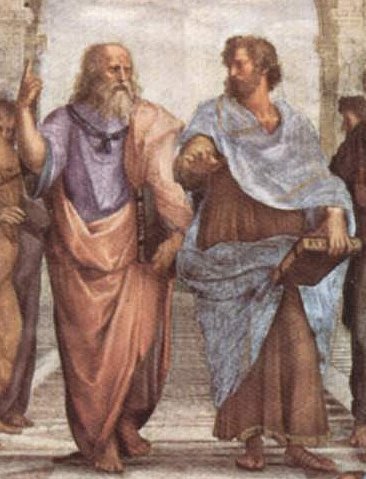
They represent two paths, two approaches: Plato, going from reality to the Ideal, from earth to the philosophical ideal, and the other, Aristotle, showing the philosophical ideal which can only exist in his illustration of thisworld. Transcendency and immanence are represented through these two characters. Around them, Raphael has gathered the great thinkers of all times. Especially those from Antiquity, giving them the faces of some of his contemporaries.
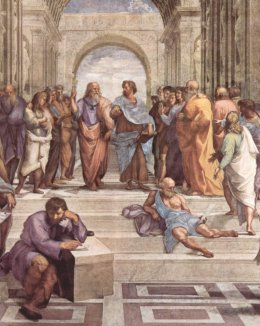 Without going into detail, let us look at some of the important characters. Heraclitus, Diogenes, disregarding everything and disregarded by all. Socrates, perfectly recognizable by his satyr's face, surrounded by Alexander the Great, Alcibiadies and other disciples. Euclid, with Bramante's face, giving a mathematical demonstration along with Zoroaster, who mastered the knowledge of the sky, and Ptolemy, who mastered the knowledge of the earth. On the left, Averroes, recognizable by his white turban, who introduced our world to Eastern knowledge. In the foreground, Pythagoras and Anaxagoras of Miletus, then a florid Epicurus, crowned with vines. Each one of them represents an encyclopedia of knowledge, in which Raphael has not forgotten himself. He is at the far right, dressed in black, accompanied by a young man dressed in white, Sodoma, the painter. Raphael pays homage to Michelangelo and Leonardo da Vinci by giving their features to Heraclitus and Plato.
The most brilliant part is the architecture at the top of the work, which is completely due to Bramante. These are exactly the same coffers as the ones which Bramante was raising in the new Saint Peter's Basilica, which was then taking form.
Without going into detail, let us look at some of the important characters. Heraclitus, Diogenes, disregarding everything and disregarded by all. Socrates, perfectly recognizable by his satyr's face, surrounded by Alexander the Great, Alcibiadies and other disciples. Euclid, with Bramante's face, giving a mathematical demonstration along with Zoroaster, who mastered the knowledge of the sky, and Ptolemy, who mastered the knowledge of the earth. On the left, Averroes, recognizable by his white turban, who introduced our world to Eastern knowledge. In the foreground, Pythagoras and Anaxagoras of Miletus, then a florid Epicurus, crowned with vines. Each one of them represents an encyclopedia of knowledge, in which Raphael has not forgotten himself. He is at the far right, dressed in black, accompanied by a young man dressed in white, Sodoma, the painter. Raphael pays homage to Michelangelo and Leonardo da Vinci by giving their features to Heraclitus and Plato.
The most brilliant part is the architecture at the top of the work, which is completely due to Bramante. These are exactly the same coffers as the ones which Bramante was raising in the new Saint Peter's Basilica, which was then taking form.
It must have been phenomenal to have Michelangelo, painting the Sistine Chapel, Bramante, raising domes and colonnades and Leonardo da Vinci, prowling thecorridors and looking for work, as one's close neighbors. Julius II was a very lucky man.
Raphael's School of Athens
Raffaelo Sanzio or Santi, known as Raphael
He was born in Urbino, in the Marches on March 28, 1483. He died in Rome on April 6, 1520. Another one of those beings, like Mozart, Schubert and others, whose blinding genius left a mark on human history. His father, Giovanni di Santa di Pietro, was a painter. As a small child, Raphael came to know about pigments, glue, binders and eggs.At the age of 11, he was an orphan and already brilliant. He surfaced in Perugia in "Il Perugino's" studio, where he pursued his training. Popes Julius II and Leo X allowed him to accomplish an immense work: the former entrusted him with the decoration of the 4 Stanze or rooms of the Vatican; the latter, that of the Loges. He was also in demand by the era's leading personalities: in 1514, he decorated the Farnesina villa for Chigi, the banker (frescoes of The Triumph of Galatea). After Bramante's death, he was made the chief architect of Saint Peter's and director of excavation of antiques. This did not prevent him from continuing to create frescoes, paintings and portraits. Showered with honors and favors, he enjoyed immense popularity. He deserved the epithet of "divine" which was conferred upon him. He died at the age of 37 of an attack of malaria.
To frame this visionary and utopian concept for society, the Renaissance man first implemented a kind of social geometry. In the 15th, and then the 16th century, man would imagine an ideal triangle,
Raffaelo Sanzio or Santi, known as Raphael
The patron prince - The artist - The humanist
During the Renaissance, at least three people were needed to create a garden. The first person was the owner, the patron. He had the social, political and financial power. The garden's grandeur, beauty, complexity and the marvels to be put into it depended on him. The second person was what was then called the engineer. Today, we would call him the designer -- landscaper. It was he who translated the patron's desires by adapting his budget to that of the patron. He had to do everything. Create or raze hills. He had to regrade the land so that it could bear gigantic statues and artificial grottos. He had to find the stone to sculpt the statues, find the stone to build the grottos. He was responsible for the actual work. An engineer's work was terrifying. He could start his career working for a Roman cardinal. He could end it working for a Grand Duke of Tuscany; but, in any event, what he did for the Grand Duke of Tuscany must completely eclipse what he had done for the Roman cardinal. This "one upmanship" progressive push was very important to the Renaissance. An extraordinary emulation to surprise, astound, delight and fill with wonder. The third person was the key person: the humanist. This was the scientist, the erudite, the scholar, the technician who would design the garden. The humanist would create the garden's program, its scenery. The garden creator was a position filled by extraordinary people. Politian, the most famous humanist and researcher of his time, did not find it beneath him to create gardens for the Medicis. Leonardo da Vinci created them. Andrea Mantegna did the same in Mantua.
This is a creation based on spiritual philosophy and forms, without which a garden could not exist in that era. A garden was a valued place, in which three people had to be immortalized:
Botticelli, Politian, Giovanni Pico della Mirandola and Marsilio Ficino used to meet in the Medici villas, following their patron, Lorenzo the Magnificent, and share his meditations. The itinerary laid out long ago in the "Dream Fight for the Love of Wisdom" varied according to the walk. In Lorenzo de Medici's gardens, the ideas of "Poliphilus" were poetically illustrated.
















The Medici family in Florence is the archetypal princely family who felt responsible for patronage. There were some very famous Medicis: Cosimo the Elder, Lorenzo the Magnificent, but also Lorenzo di Pia Francesco, who was one of the greatest patrons in Florence in the 15th century, who had a marvelous painter working for him: Sandro Botticelli. Botticelli had a humanist named Politian dictate a philosophical program -- hermetic, magical, genealogical and heroic -- in the form of a great song. This great song became a double painting, which is, still today, among thebest-known in the world. The Birth of Venus and the famous Spring are the exact product of this ideal geometry. Florence under the Medicis is a valued example of this famous triangle, but all Italian cities of the 15th century benefitted from the same status.
in which everything is put to work so that, by means of the energy of each of the triangle's points, human genius is aroused. The entire Renaissance used this ideal triangle geometry.
This is a creation based on spiritual philosophy and forms, without which a garden could not exist in that era. A garden was a valued place, in which three people had to be immortalized:
- The patron prince.
- The artist, whether he was an engineer, a city planner, an engraver, a painter, a sculptor or a draftsman, who had to transcend himself.
- The humanist who had to create a program, the coherency of which had to be absolute.
Botticelli, Politian, Giovanni Pico della Mirandola and Marsilio Ficino used to meet in the Medici villas, following their patron, Lorenzo the Magnificent, and share his meditations. The itinerary laid out long ago in the "Dream Fight for the Love of Wisdom" varied according to the walk. In Lorenzo de Medici's gardens, the ideas of "Poliphilus" were poetically illustrated.
Hypnerptomachia or The Dream of Poliphilus
A work of Francesco Colonna (1433-1527), a Dominican monk. A book based on real characters, deeply esoteric, it is a view into the period of intellectual activity known as the Renaissance. Because of its abstruse and allegorical nature, The Dream of Poliphilus played an extremely important role in the creation of initiatory Italian Renaissance gardens. The book is illustrated with numerous woodcuts by an unknown artist.
Hypnerptomachia or The Dream of Poliphilus
You would enter a garden chaste, but you should leave as an initiate. Each garden had its own initiation. This was the goal of Renaissance gardens. I have chosen two works of art to illustrate this text. The last panel of The Hunt of the Unicorn
The Hunt of the Unicorn
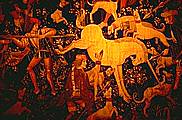
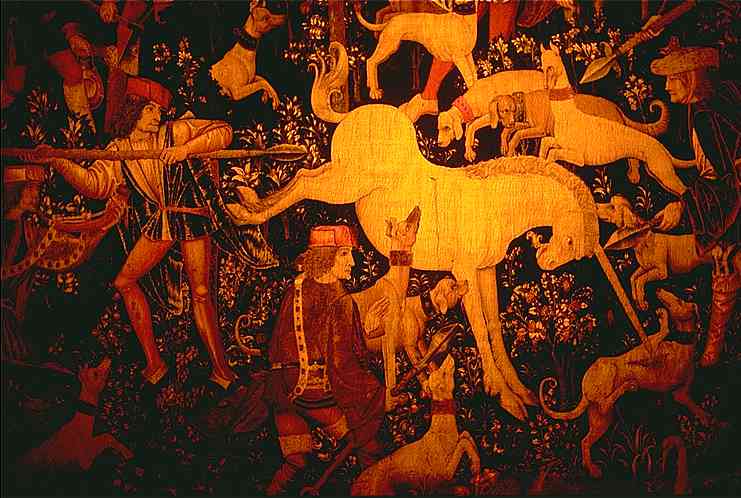
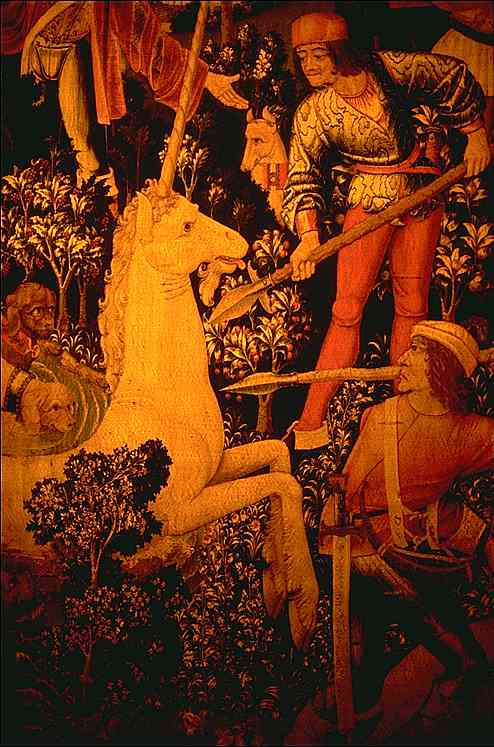

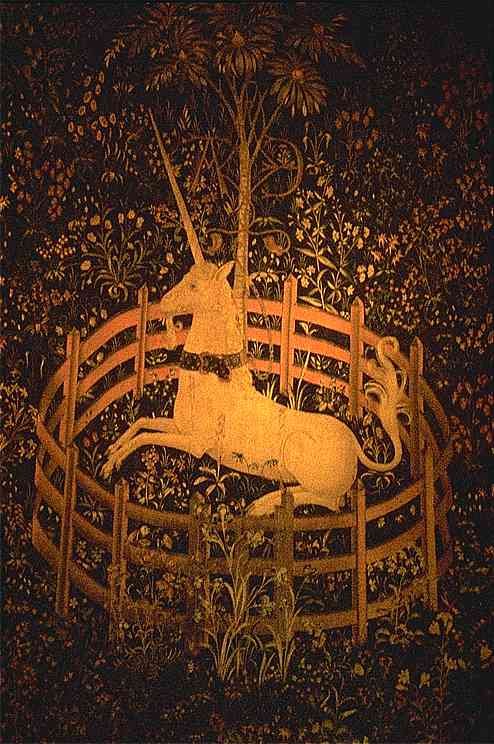

The Hunt of the Unicorn
Spring by Sandro Botticelli

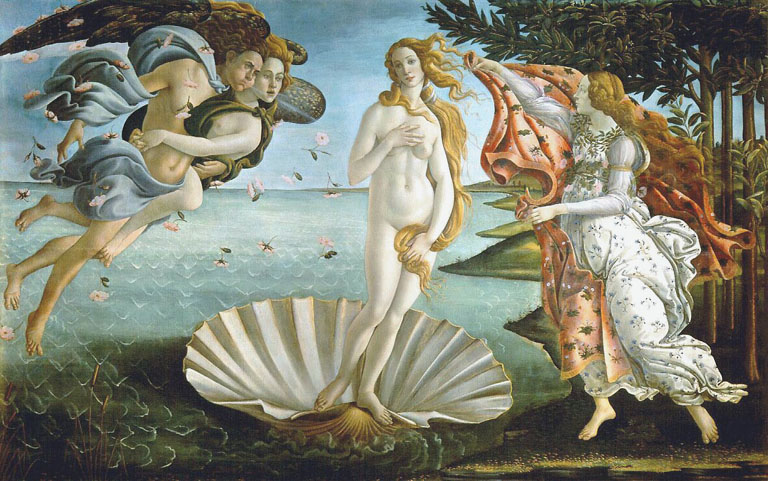
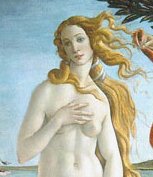
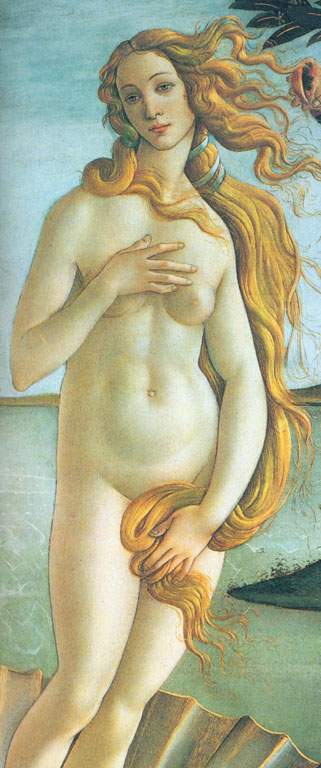
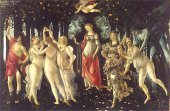
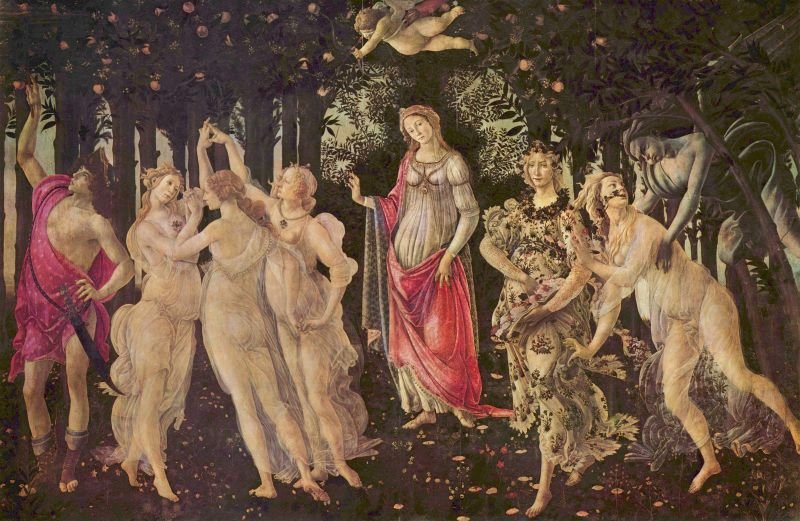
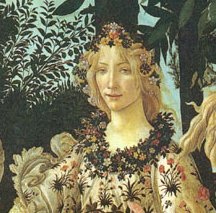
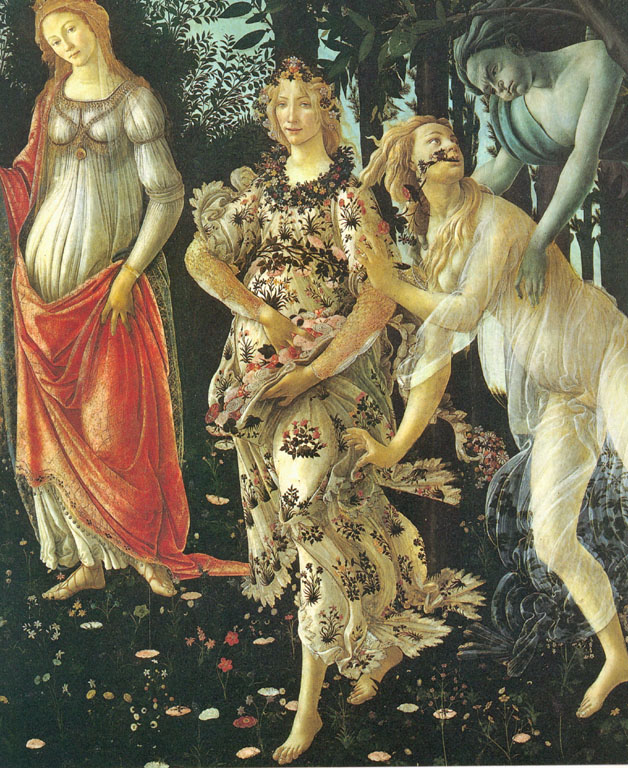
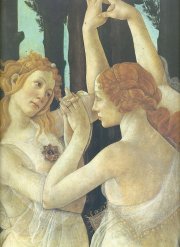
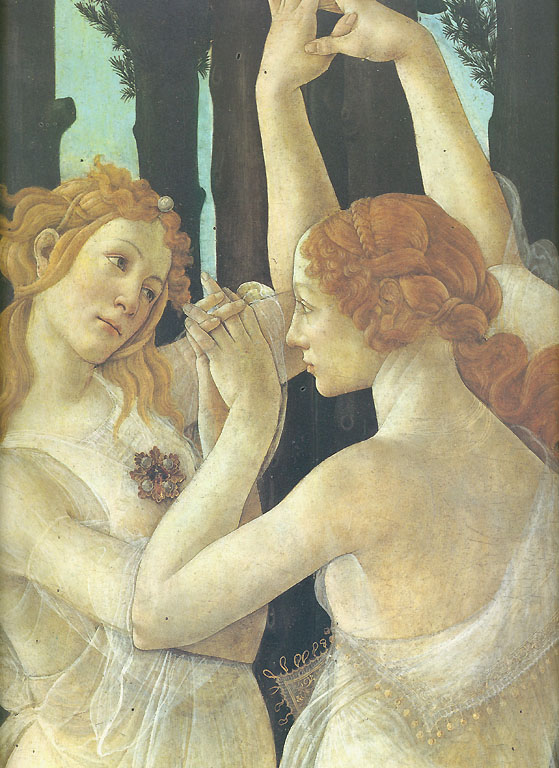
The Medici family in Florence is the archetypal princely family who felt responsible for patronage. There were some very famous Medicis: Cosimo the Elder, Lorenzo the Magnificent, but also Lorenzo di Pia Francesco, who was one of the greatest patrons in Florence in the 15th century, who had a marvelous painter working for him: Sandro Botticelli. Botticelli had a humanist named Politian dictate a philosophical program -- hermetic, magical, genealogical and heroic -- in the form of a great song. This great song became a double painting, which is, still today, among thebest-known in the world. The Birth of Venus and the famous Spring are the exact product of this ideal geometry. Florence under the Medicis is a valued example of this famous triangle, but all Italian cities of the 15th century benefitted from the same status.
- Ferrara with the Este family
- Milan with the Sforza family
- Urbino with the famous Montefeltres
- Mantua with theGonzagues family
- Rome with the Popes.
Spring by Sandro Botticelli
The patron prince - The artist - The humanist
La Renaissance italienne
Mannerism
Mannerism is a very recent term. It was invented in 1965 by Mr. André Chastel, a great art historian and curator of the exhibition of what was called at the time the 2nd European Renaissance, organized at the Louvre Museum in Paris.
For centuries, when one spoke of the Renaissance, one referred to the era starting with Fra Angelico and ending with Michelangelo. The intermediate period between the Renaissance and the Baroque period was called the 2nd Renaissance. It brought together artists such as Il
BronzinoBronzino
Agnolo di Cosimo di Mariano Tori, known as Il Bronzino, or the little bronze man. He had, as he himself said, the skin of a Moor. He was born on November 17, 1503 in Monticelli, a small village on the outskirts of Florence. After two mediocre teachers, he met Pontormo. With a teacher of this caliber, he discovered his own idiom, refined his vision and perfected his technique. It is also interesting to note that Vasari was also Pontormo's student. Il Bronzino's Life, by Vasari, is one of the most exact and reliable there is. In 1526, he executed his first solo work: the four tondi in the Santa Felicità Church in Florence. In 1539, Florence was preparing for the marriage of Duke Cosimo I de Medici to Eleanor of Toledo. Il Bronzino was commissioned to create four bas-reliefs in bronze, painted in trompe l'œil. This work was so marvelous that the couple was immediately seduced, and they immediately named Il Bronzino the court painter for the Medici dynasty. He was famous and all Florence wanted him. His cold and strict, sensitive and keen psychological penetration of the model, along with perfect technique, would produce the most beautiful Mannerist portraits that exist. After a stay in Rome (1546-1548), he painted a series of religious works, including the Resurrection in the Annunziata and Christ in Limbo in Santa Croce. He died in Florence in 1572.
Some Italian Renaissance works and some Italian Mannerist works, for comparison
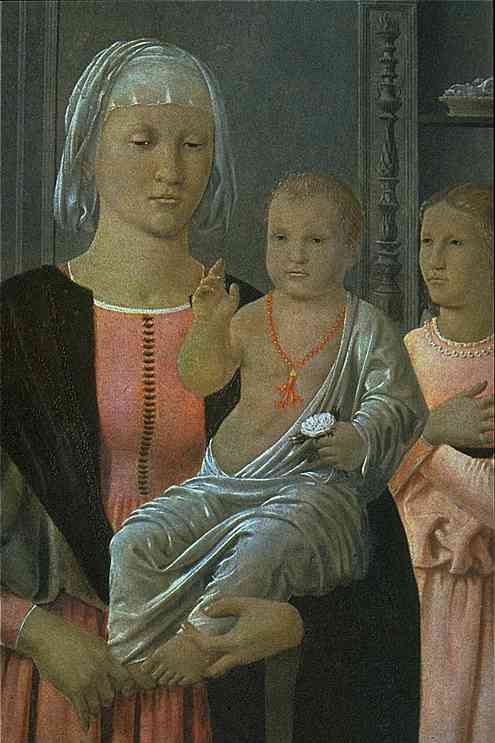
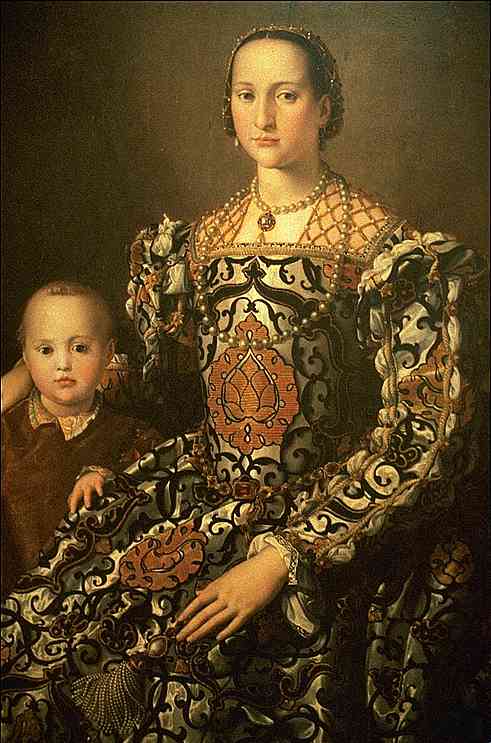
Portrait of Eleanor of Toledo - Detroit
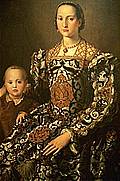
 Portrait d'Eléonore de Tolède
Portrait d'Eléonore de Tolède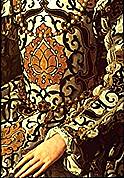
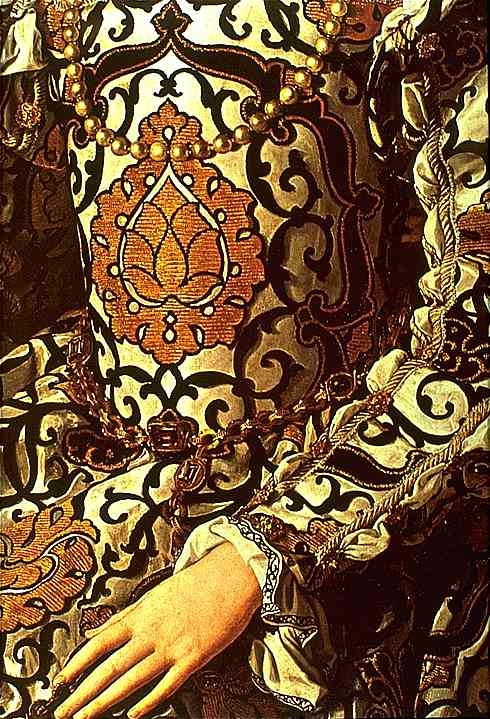
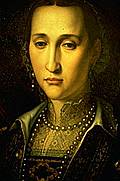
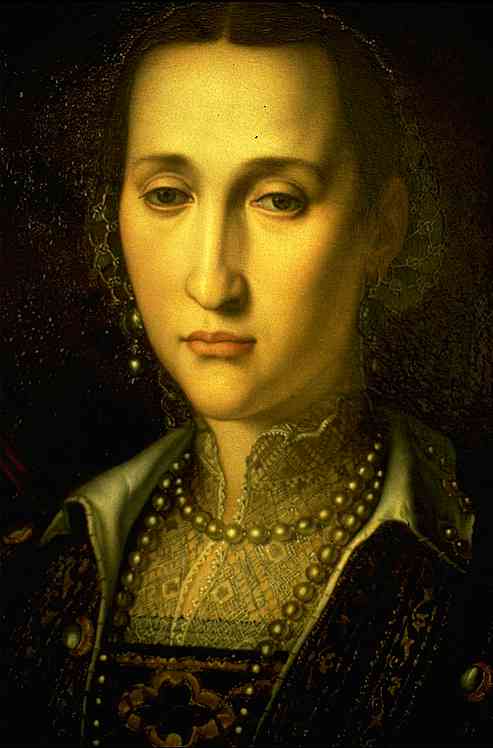 She constantly imagined herself dead and wanted to be painted as a corpse in her coffin. She died of a fever, as did most of the Medicis, before reaching the age of forty. The extraordinary thing is that in 1982, twenty years after Chastel's statement, Florence opened the Medici tombs and was stupefied to discover that Eleanor of Toledo had been buried in that same dress. Her embalmed body and her gown with the chain around her waist were found in a fabulous state of preservation. The incredible pearl necklace was not there. These are the famous Medici pearls which were later worn by all those women whose lives ended badly, including Marie-Antoinette. The pearls are cursed...
She constantly imagined herself dead and wanted to be painted as a corpse in her coffin. She died of a fever, as did most of the Medicis, before reaching the age of forty. The extraordinary thing is that in 1982, twenty years after Chastel's statement, Florence opened the Medici tombs and was stupefied to discover that Eleanor of Toledo had been buried in that same dress. Her embalmed body and her gown with the chain around her waist were found in a fabulous state of preservation. The incredible pearl necklace was not there. These are the famous Medici pearls which were later worn by all those women whose lives ended badly, including Marie-Antoinette. The pearls are cursed...
Portrait of Eleanor of Toledo - Detroit
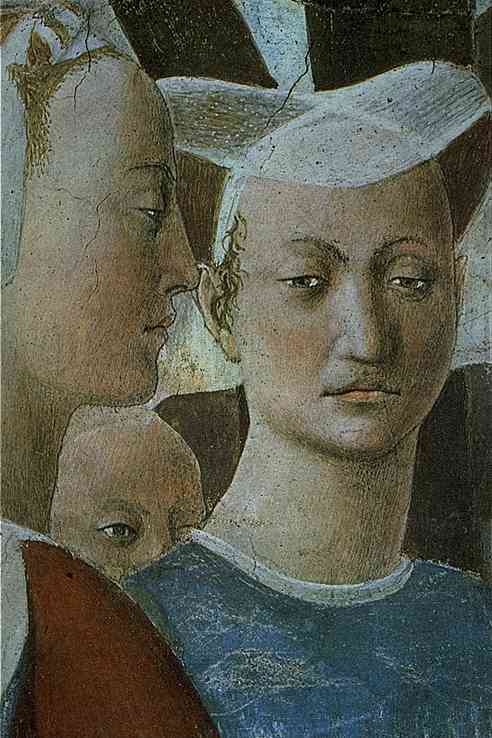

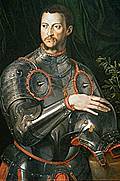 Bronzino - Cosme Ier de Médicis - Musée des Offices
Bronzino - Cosme Ier de Médicis - Musée des Offices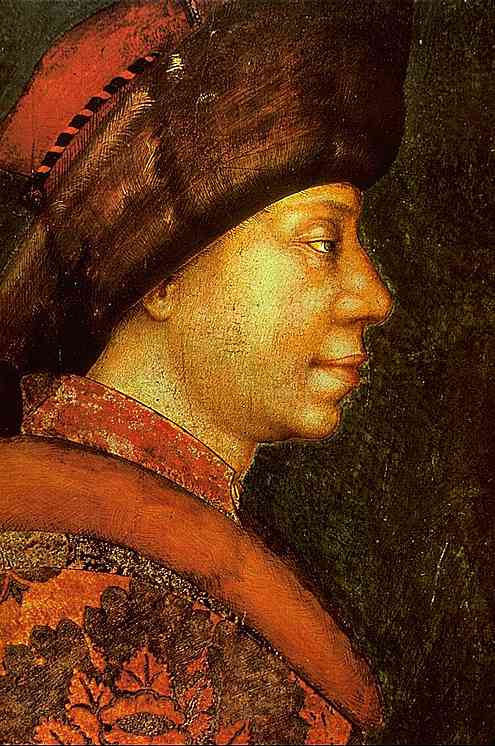
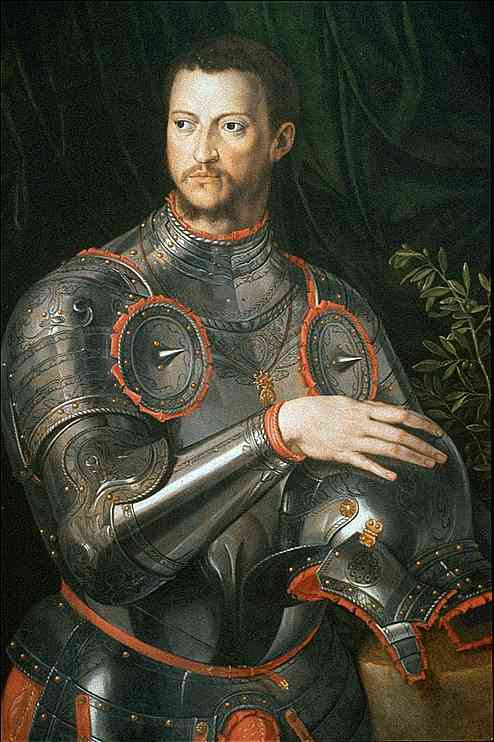
Portrait of Cosimo de' Medici in armor - Toledo (USA)


This is an extraordinary portrait. Let's look at the details. The shoulder, the elbow hinge. He succeeds in portraying the blurriness of the engraving under the elbow, due to the metal's wear and, most of all, in contrast, the completely feminine hand, which shows or betrays Cosimo's true nature, which included an unbelievable temper, unbelievable will power andabsolutism and, from time to time, monstrous cowardice and hypocrisy, animal-like in nature. Il Bronzino betrayed the model's secret nature, usingonly the hand resting on steel.
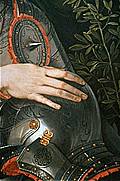
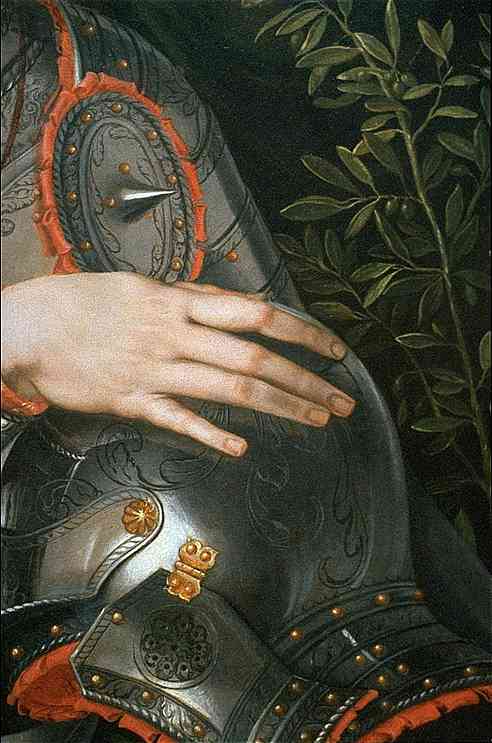
Portrait of Cosimo de' Medici in armor - Toledo (USA)
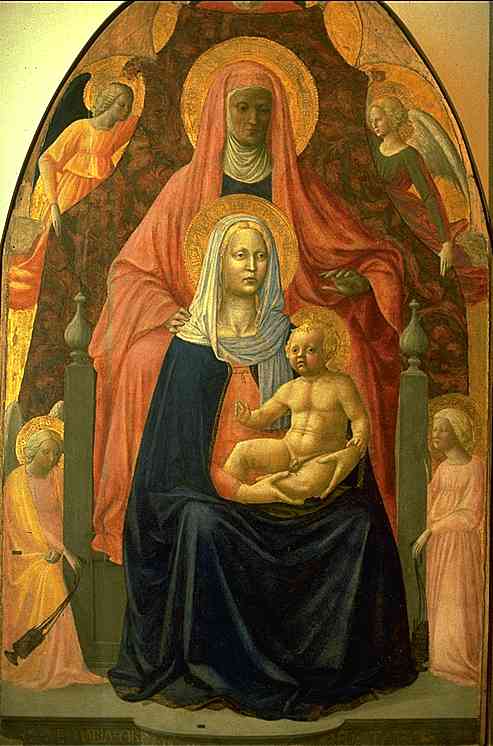
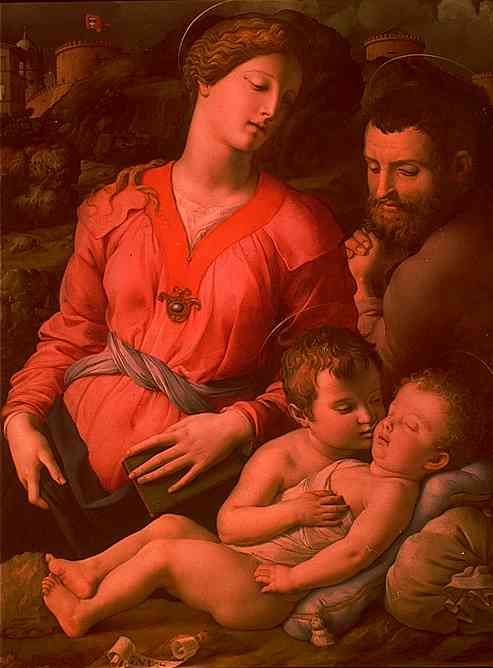
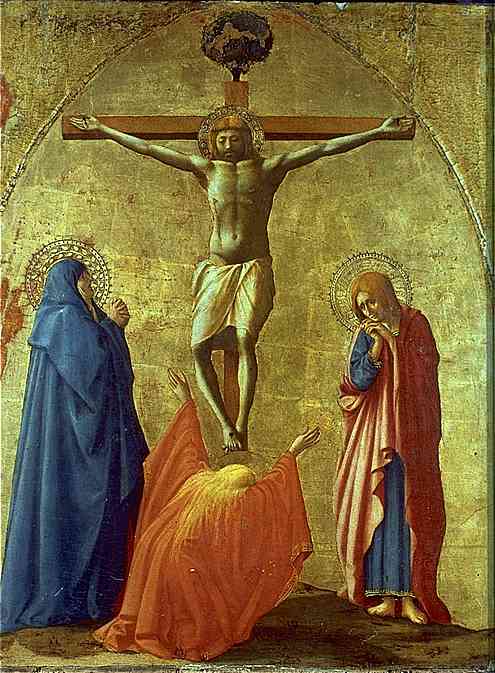
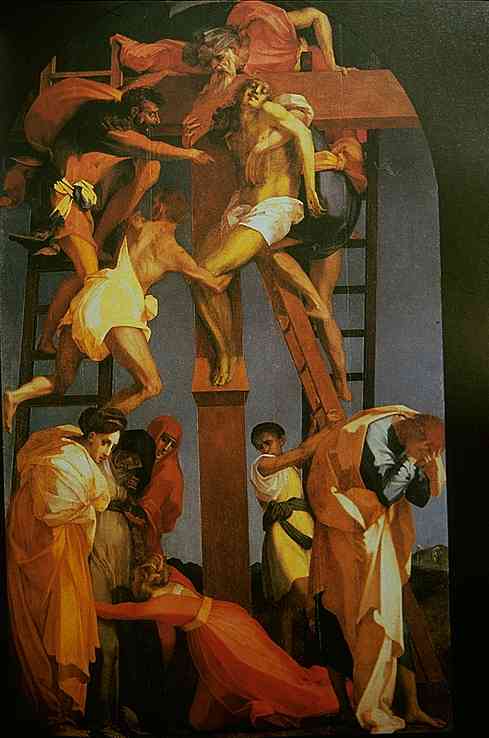
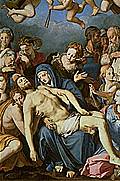 Bronzino - La Déploration sur le Christ mort -
Musée des beaux-arts et d'archéologie de Besançon
Bronzino - La Déploration sur le Christ mort -
Musée des beaux-arts et d'archéologie de Besançon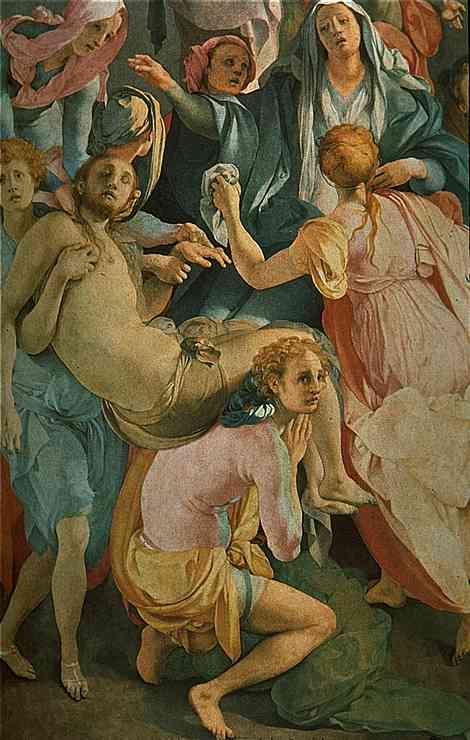
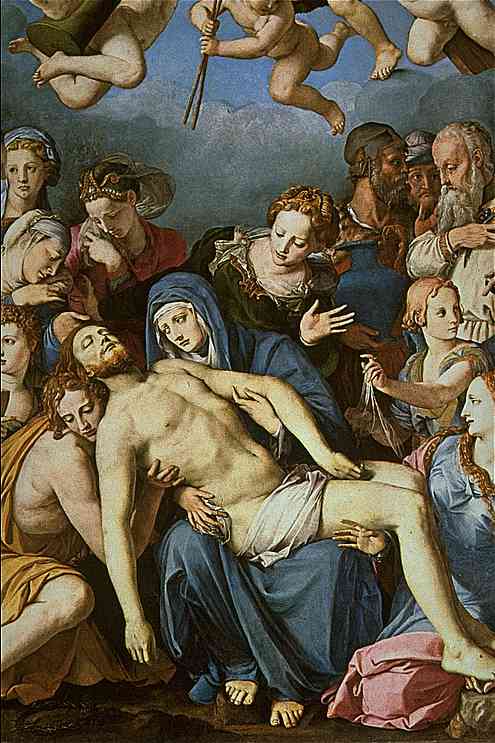
Bronzino's and Pontormo's Deposition
It is interesting to see the student's, Il Bronzino's, Deposition nextto the other Deposition which caused an uproar in Florence, the one bythe master, Pontormo. We shall study these two works, which are of the same size, approximately fourmeters high, of the same subject and from the same era. Two fundamentally different visions of the same theme.


Il Bronzino's Deposition is practically a Pietà. Christ lies inthe arms of the Virgin Mary, surrounded by characters who have taken part inthe story and angels. A painting in which Il Bronzino shows his taste for very strict composition; a magnificent line snakes through the whole work, to the very top, and a counterstroke endows this composition with balance and serenity. The details are very beautiful. In particular, one of the three Marys with this extraordinary jeweled gorget which resembles a shackle. The most beautiful, Mary Magdalene, with an extravagant hairdo and a face of nearly sculptural purity of line, an impression due to the coldness of the skin tones. The strangest character is the Angel of Passion, who is holding the blood collected from Christ's wound in his chalice; take note of the brilliance of the eyes, so characteristic of Bronzino, or his curls, which are treated as a piece of gold jewelry. One can feel the need to use impasto to present the reality of a theme in a very curious manner. This is a very immediate, earthy painting. The characters have existence, volume, weight and space. It is fascinating to imagine the conversations which must have taken place between the young Il Bronzino, so close to the subject matter, and Pontormo, more mature, so far from the subject matter but so close to the spirit, and to wonder how they challenged each other to create such diametrically opposed works on the same theme.
JACOPO CARRUCI, known as DA PONTORMO
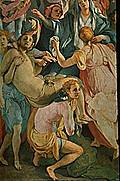
- Empoli 1494 - Florence 1556.
 This deposition is in Florence, in the Santa Felicità church, in the Caponi chapel, where the work is surrounded by the four tondi by his student, Il Bronzino. Pontormo was the painter of the ethereal.Christ's body weighs nothing, the persons supporting him are only standing on one toe. All the drapes were created in order to further increase this visual impression. Pontormo was a visionary, while Il Bronzino was a pragmatic witness of his era. What is a bodily presence for Il Bronzino is, for Pontormo, an absence, a shadow. We shall delve into this work, as the more closely one looks at it, the more one is convinced that Pontormo is one of the strangest painters of his time and one of the most captivating. Christ's face is completely devoid of existence, of any presence. The Virgin's face is washed out by her liquid veil; the veil and the dress are one and the same. The ambiguity has so transformed her into a stream of pain, that one can no longer make out where the dress starts and the flesh ends. Mary Magdalene is more present, but her gaze has an uneasy look to it. Christ's bearers: the one on the far right, in olive and red, the one on the bottom, the only one looking at us; very strangely, he is staring straight at the spectator; the face of the last one, the one holding Christ's right arm, brings that of Christ to mind, younger and again painted with this same feeling of a washed-out brush.
This deposition is in Florence, in the Santa Felicità church, in the Caponi chapel, where the work is surrounded by the four tondi by his student, Il Bronzino. Pontormo was the painter of the ethereal.Christ's body weighs nothing, the persons supporting him are only standing on one toe. All the drapes were created in order to further increase this visual impression. Pontormo was a visionary, while Il Bronzino was a pragmatic witness of his era. What is a bodily presence for Il Bronzino is, for Pontormo, an absence, a shadow. We shall delve into this work, as the more closely one looks at it, the more one is convinced that Pontormo is one of the strangest painters of his time and one of the most captivating. Christ's face is completely devoid of existence, of any presence. The Virgin's face is washed out by her liquid veil; the veil and the dress are one and the same. The ambiguity has so transformed her into a stream of pain, that one can no longer make out where the dress starts and the flesh ends. Mary Magdalene is more present, but her gaze has an uneasy look to it. Christ's bearers: the one on the far right, in olive and red, the one on the bottom, the only one looking at us; very strangely, he is staring straight at the spectator; the face of the last one, the one holding Christ's right arm, brings that of Christ to mind, younger and again painted with this same feeling of a washed-out brush.
Bronzino's and Pontormo's Deposition
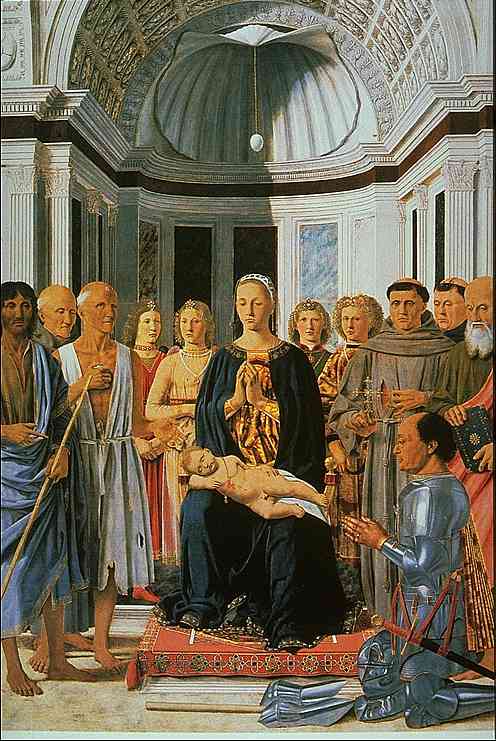
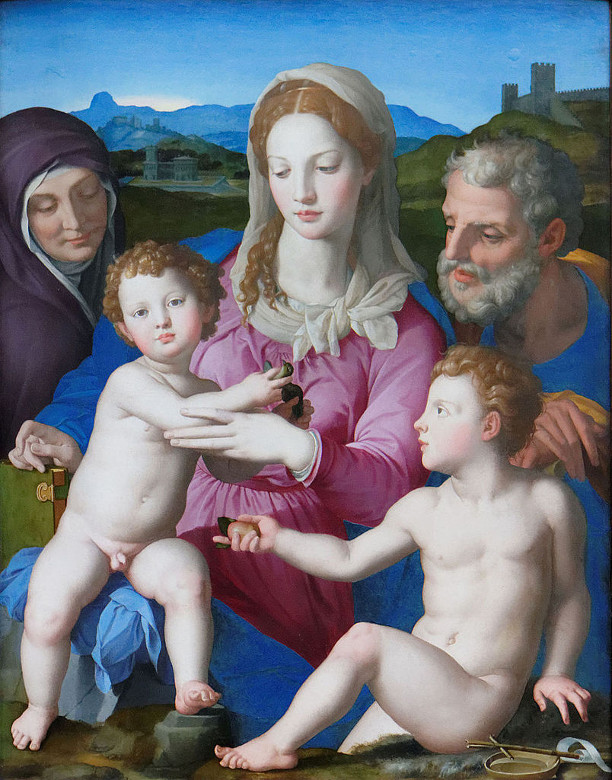
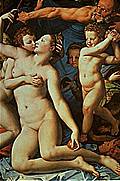 Bronzino - Allegory, known as The Triumph of Venus - London- National Gallery
Bronzino - Allegory, known as The Triumph of Venus - London- National Gallery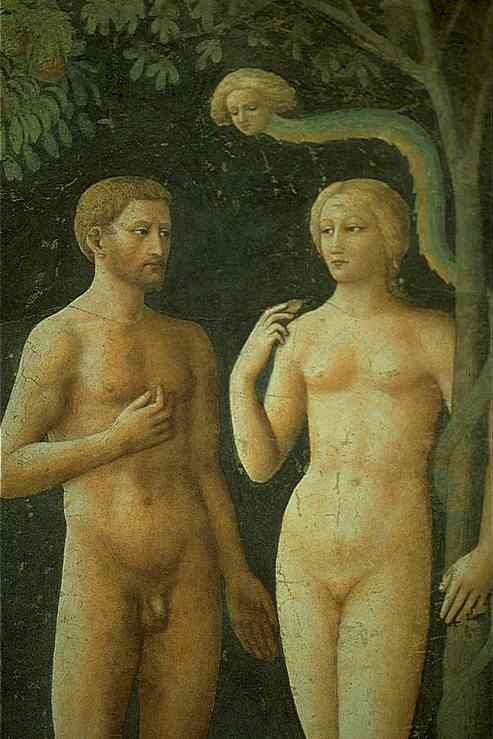
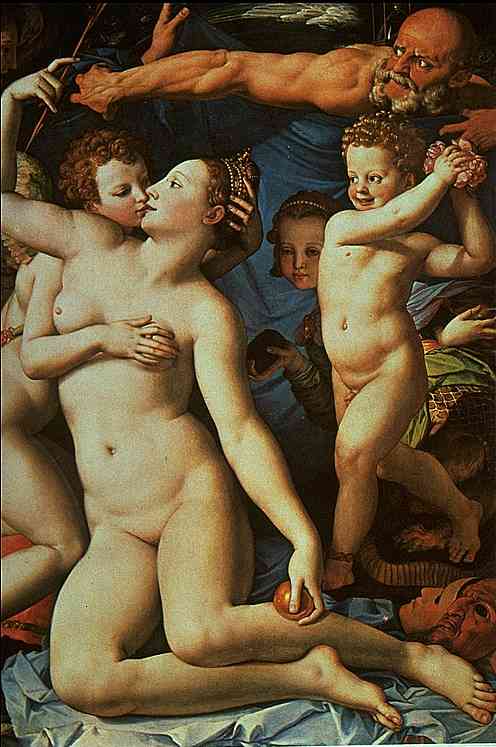
Allegory, known as the Triumph of Venus
In 1545, Cosimo I asked Il Bronzino to execute a painting for Francis I, having to do with Cupid. With the help of a humanist, Landinelli, Il Bronzino created the painting. Francis I received it, understood it and liked it. Everything in it was dialectically erotico-philosophical, fitting in perfectly with the Mannerist style at Chambord at that period. Henri IV relegated it to the accessories warehouse. It was forgotten, sold and resold. In the 19th century, it was bought by the National Gallery, where it still hangs today.

 This painting shows Venus being kissed, nearly raped, by her own son, Cupid. Venus is sacrificing herself so that he cannot see the apple which she received from Paris (the beginning of the mythological original sin, as it was the beginning of the Trojan War). She is trying to hide his own arrow, to prevent him from continuing to wreak havoc. The mother is attempting to divest powers from her son, who is becoming too insistent. Around Venus and Cupid, there is a whole series of characters representing thewoes and joys of love. Il Piacere or Pleasure, which Il Bronzino took pleasure inpainting as a Hellenistic dancing satyr. Treachery is hiding behind him, withthe prettiest possible young girl's face, the prettiest little multicoloreddress, but which reveals a snake's tail, as she is, naturally, half snake andhalf woman. In one hand, she holds a honeycomb, in the other, an asp. Pleasureand pain at the same time. The two hands are reversed: her right hand is a lefthand, her left hand is a right hand...
This painting shows Venus being kissed, nearly raped, by her own son, Cupid. Venus is sacrificing herself so that he cannot see the apple which she received from Paris (the beginning of the mythological original sin, as it was the beginning of the Trojan War). She is trying to hide his own arrow, to prevent him from continuing to wreak havoc. The mother is attempting to divest powers from her son, who is becoming too insistent. Around Venus and Cupid, there is a whole series of characters representing thewoes and joys of love. Il Piacere or Pleasure, which Il Bronzino took pleasure inpainting as a Hellenistic dancing satyr. Treachery is hiding behind him, withthe prettiest possible young girl's face, the prettiest little multicoloreddress, but which reveals a snake's tail, as she is, naturally, half snake andhalf woman. In one hand, she holds a honeycomb, in the other, an asp. Pleasureand pain at the same time. The two hands are reversed: her right hand is a lefthand, her left hand is a right hand...
Down to the smallest details, this painting is an ambiguous one. Cupid's andVenus' kiss is extraordinarily physical. The relationship between mother andson is unbelievably present.
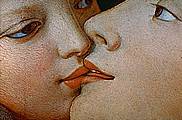
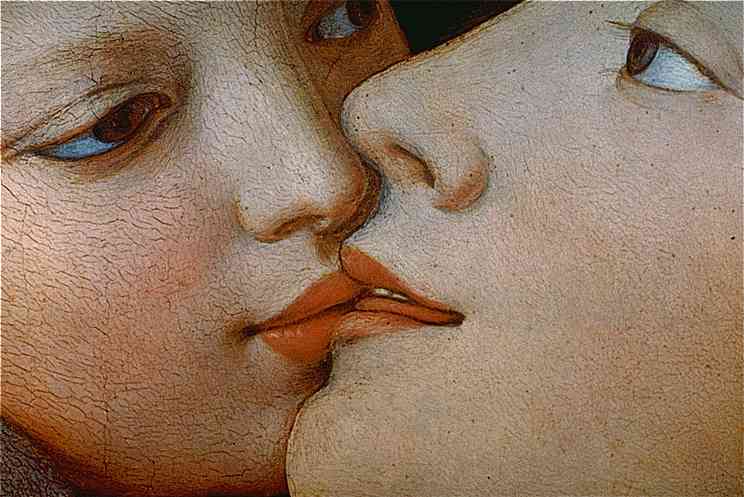 Jealousy is on the left, a horrible old woman
Jealousy is on the left, a horrible old woman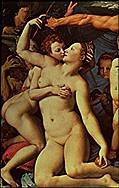
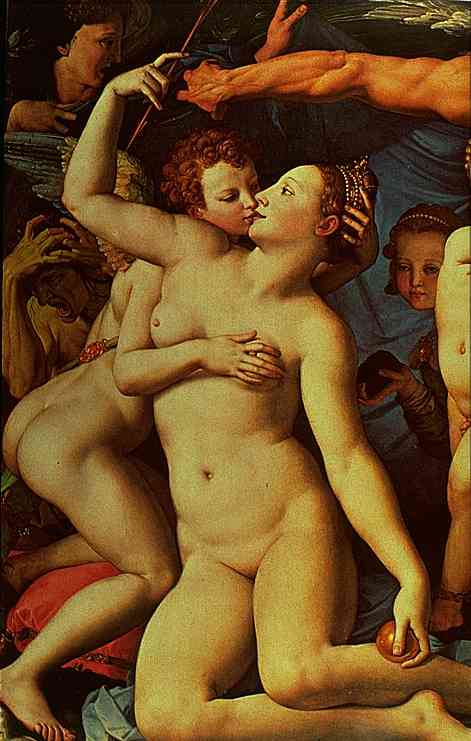
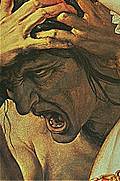
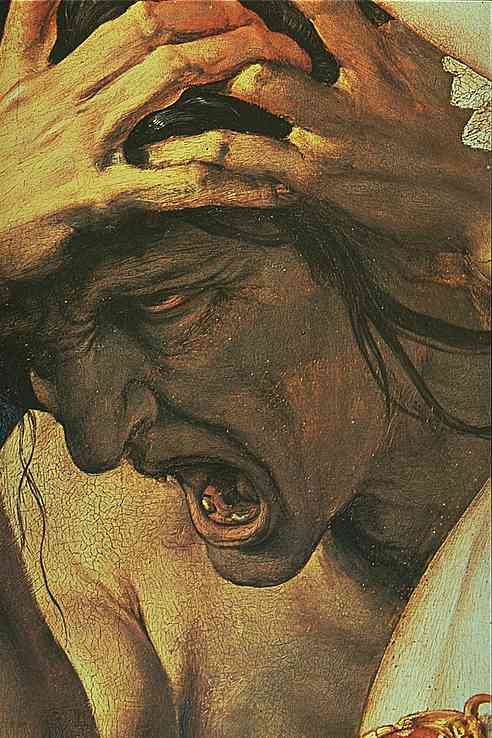
Look at the quality and beauty of the entire work with, as one last detail, the two masks.
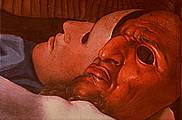
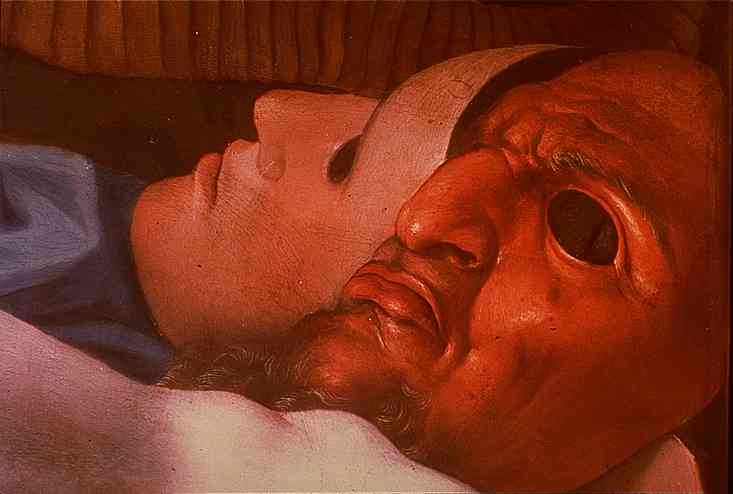
A young woman and an old man
Allegory, known as the Triumph of Venus
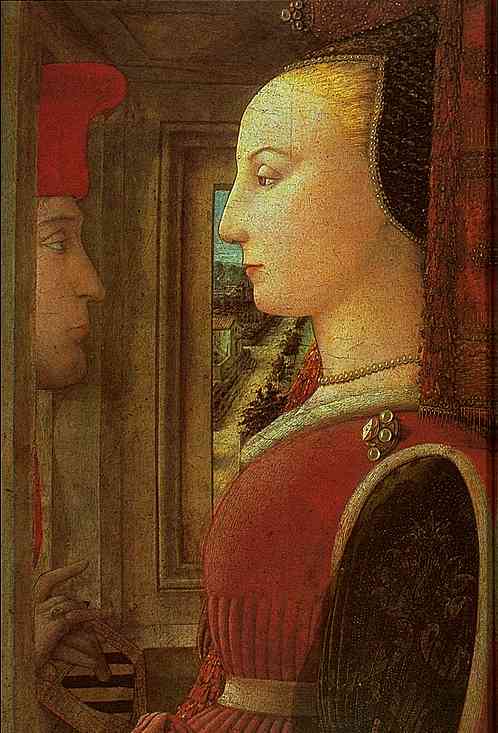

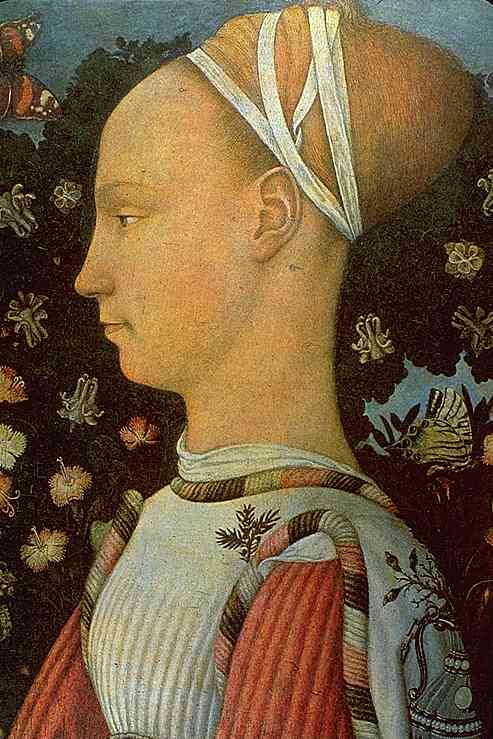
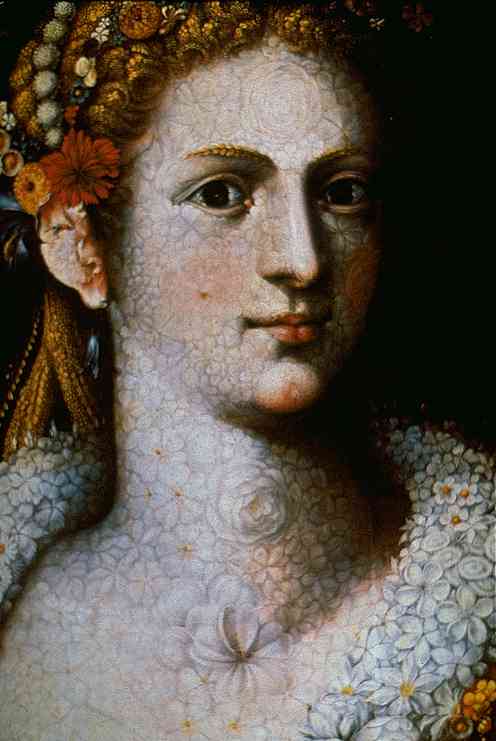
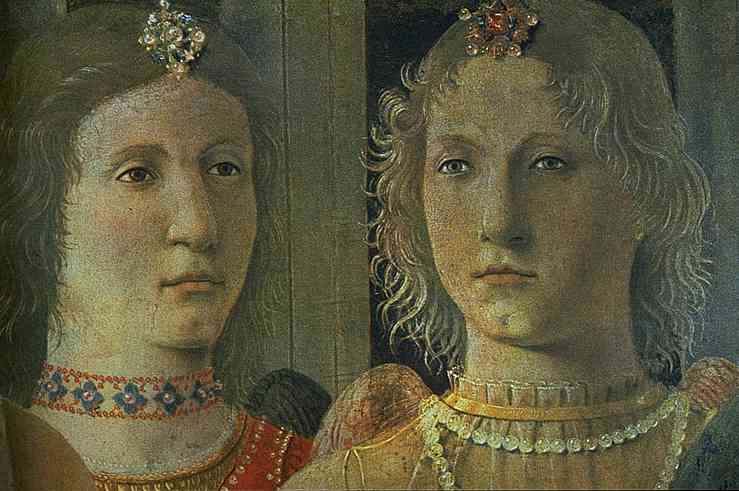
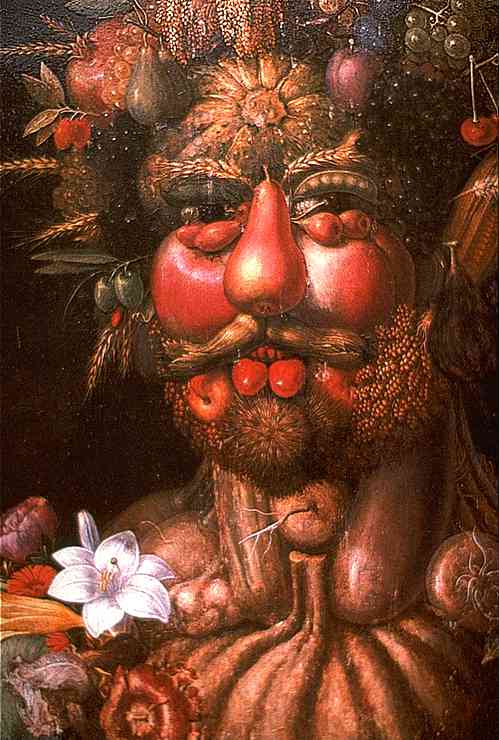
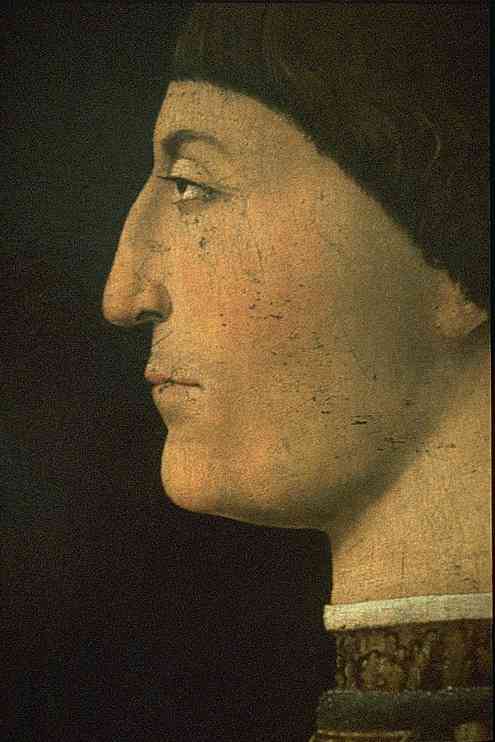
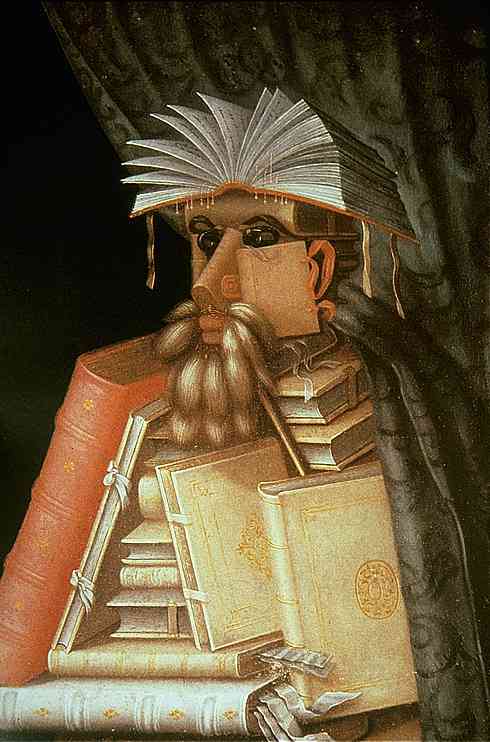
Some Italian Renaissance works and some Italian Mannerist works, for comparison
Bronzino
GIACOMO BAROZZI known as Il VIGNOLA
Italian architect and theoretician. In Emilia, he was trained as a painter and decorator. He then became a student of Sebastiano Serlio (the one who gave models to the Fontainebleau architects).He worked mainly in Rome, as well as in Fontainebleau. Summoned by Francis I, he worked for him from 1541 to 1543 In Bologna, he and Primaticcio designed plans for the San Petronio facade. In 1550, he moved definitively to Rome.For Julius III, he worked on the Villa Julia, then on the Villa Farnese in Caprarola. It is there that we discover his marvelous spiral staircase with open newels.
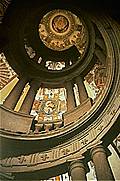
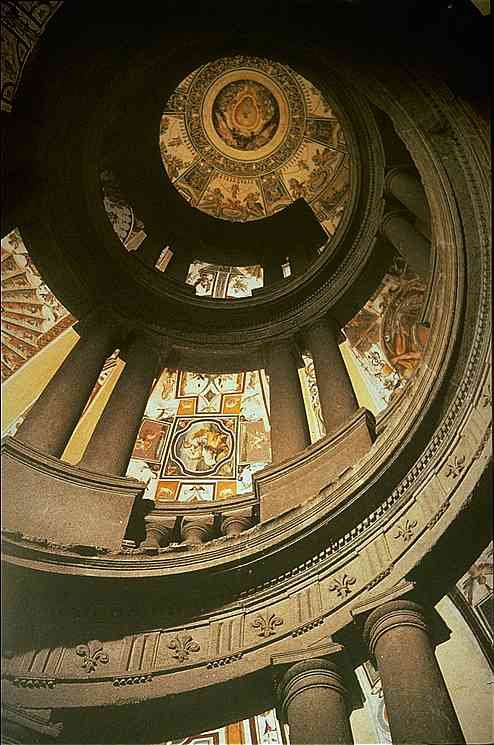 In 1566, Vignola started creating the Villa Lante in Bagnaia (casini,garden and park). But what is considered to be his absolute masterpiece is Il Gesù Church in Rome, which he would build much later.
In 1566, Vignola started creating the Villa Lante in Bagnaia (casini,garden and park). But what is considered to be his absolute masterpiece is Il Gesù Church in Rome, which he would build much later.
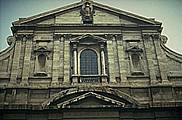
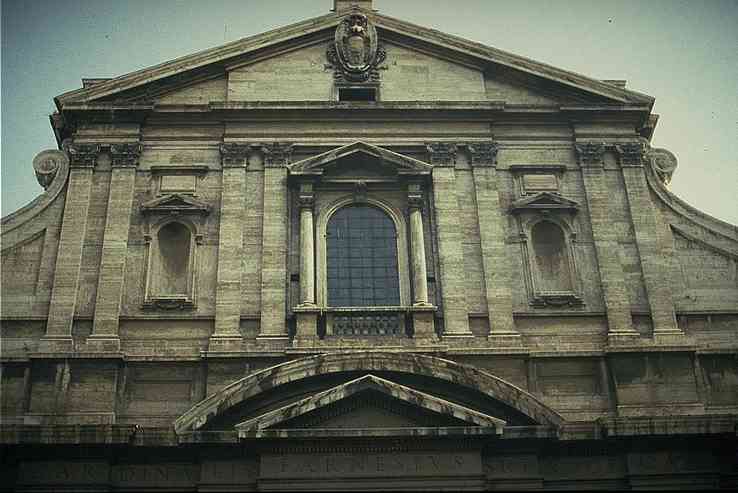
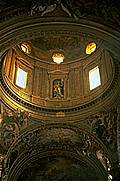
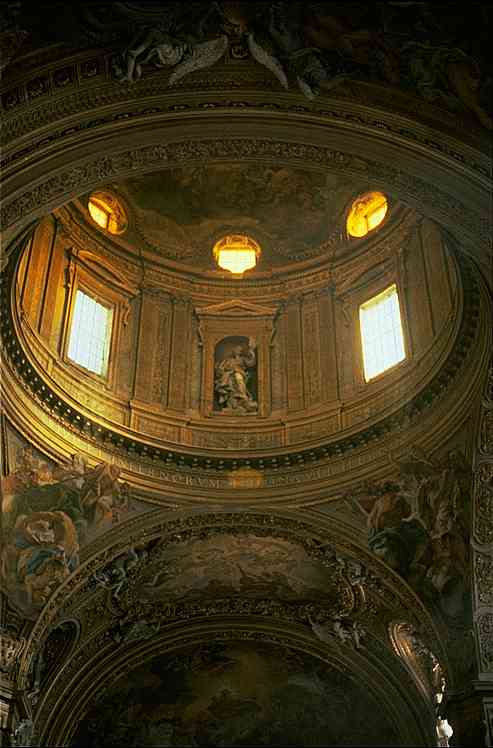
GIACOMO BAROZZI known as Il VIGNOLA
.In general,these artists were completely ignored by the public. Even the curious public, knowledgeable and erudite, detested them. Time has passed. Idols fall, new values come into play. Raphael was ostracized and, today, is still rather badly viewed. Curiously enough, Il Bronzino, on the other hand, is the subject of research, books and far more numerous exhibitions. Mr. Chastel had the courage to organize this formidable exhibition in the Petit Palais, the Grand Palais and the Louvre simultaneously, bringing together what he was able to obtain from museums in the Netherlands, Italy, England and France. By means of this exhibition and a very thick catalogue, he was able to introduce Mannerism to the general public.
Why Mannerism? When Da Vinci, Michelangelo and Raphael died, Italian society demanded that young artists immemorialize their forefathers' genius and glory by imitating their manners. An imitative style of their manners, from which came the name of Mannerists, which Mr. Chastel bestowed on these young painters who worked from 1530 until approximately 1610 and would only be supplanted by the birth of the Baroque period. Mannerism is the missing link between the Renaissance and the Baroque.
Mannerism requires that its artists create works that enchant, surprise, frighten and unnerve. One should not try to view a Mannerist work in a cold and aesthetic manner.In Piero della Francesca's era and, even more so in Masaccio's, one could admire calmly. A Mannerist viewer cannot keep his calm. He needs the stridency of sound, be it in a burst of laughter, or in the most unbridled, fundamental anguish. He needs to be exacerbated. That is why the bizarre is appropriate in those gardens.
Mannerism
Gardens
Nature is a divine force, and all the artists felt this deeply. The penchant for nature and landscapes in painting emerged at the end of the 14th century.Portraits which, in the past, had contrasted with a monochrome background, now stood out from a room with a window, then from a room with a window looking out on a landscape, then from a landscape without a window. For instance, Piero della Francesca painted the portrait of the Duke of Urbino in front of a landscape which is so panoramic that it suggests an artist's anamorphosis.
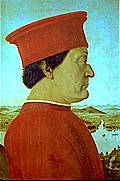
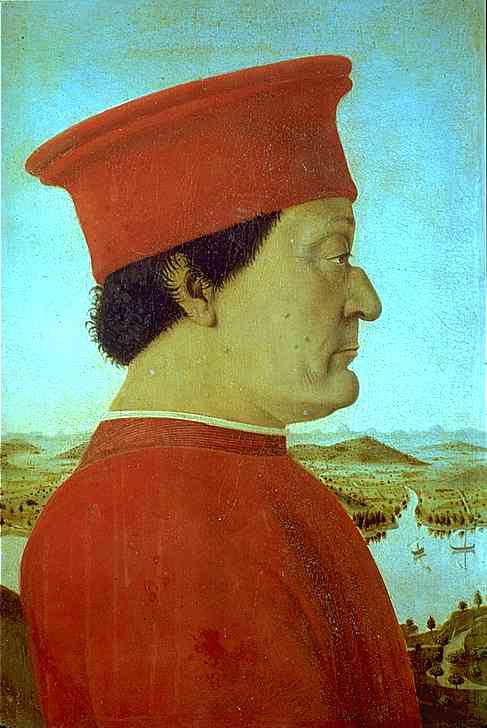 The Duke of Urbino justifying himself by the vastness of the horizons which he thus seems to rule. The Renaissance prince dips into Nature. Why gardens in particular? A garden can be modeled, it can be manufactured; a garden is thus a form of nature on which man can have an impact. Man sculpts Nature: Man is nearly God's peer. When the Renaissance princes ordered a waterfall here, a mountain there andfacing perspectives, they felt a bit like Jupiter thundering from the top ofthe Sistine Chapel, or, if you prefer, they felt like God the father. We are in an era in which the Prince and God were like twins. The garden was thus a spot which the princes valued highly. A garden offers an adventure, a garden tells a story. This story is highlighted by important moments, in which the genius of science and the marvels of Nature were able to come together. A grotto dedicated to Vulcan allowed a Renaissance prince to exult.
The Duke of Urbino justifying himself by the vastness of the horizons which he thus seems to rule. The Renaissance prince dips into Nature. Why gardens in particular? A garden can be modeled, it can be manufactured; a garden is thus a form of nature on which man can have an impact. Man sculpts Nature: Man is nearly God's peer. When the Renaissance princes ordered a waterfall here, a mountain there andfacing perspectives, they felt a bit like Jupiter thundering from the top ofthe Sistine Chapel, or, if you prefer, they felt like God the father. We are in an era in which the Prince and God were like twins. The garden was thus a spot which the princes valued highly. A garden offers an adventure, a garden tells a story. This story is highlighted by important moments, in which the genius of science and the marvels of Nature were able to come together. A grotto dedicated to Vulcan allowed a Renaissance prince to exult.
Why?
Because it allowed him to keep the gods with him and, as such, to imagine himself to be the gods' equal. The allegorical aspect was very important to many of the garden patrons of that era. As an example, a grotto dedicated to Vulcan had to be picturesque. In order to be picturesque, the strangest and rarest objects had to be collected from around the world and included in the decor. The Renaissance delighted in rare corals, rare shells, anything rare...
After allegory came Science. Then the marvels of human genius were added, ingenuity such as automatons, the sophistication of which never ceased to increase, reaching the point when 10, 15 or 20 figures could be put in motion in the form of tableaux which could be played out in any way the spectator wished.
Allegories, the conjunction of science and pure futurology were the three reasons for which these "fabrications" started appearing in these gardens. They became ever more elaborate, complicated and expensive but, above all, fragile. A few years of neglect were enough to destroy forever the ingenuity of what people of that era had begun to call the engineers of the Renaissance.
Gardens

Start Here
Realized by Line, Jacques-Edouard's student Ecole des Beaux Arts, Lausanne (1973 - 1978).
Bomarzo is a small town, located near Viterbo on the road to Orta.
 It is the Orsini family's hereditary fief. The Castle rises at the edge of this small town.
The residence's gardens were created by Vicino Orsini, the Duke of Bomarzo. He was born in 1528 and died in 1588. An educated humanist, he was interested in the Arts and was their patron. He devoted his life to the happiness of his House and his wife, Julia Farnese. After Julia Farnese's death, he created the plan for this garden.
He didn't call this garden a giardino, but Bosco Sacro, a Sacred Grove or Bosco dei Monstri, the Monsters' grove. Monster must be understood in the Latin meaning of monstrare, which means to show and demonstrate. This then means that from stop to stop, from stage to stage, each element is a component of an immense, very neoplatonic poem to his lost love. To create this garden, he called on one of the greatest landscapers and architects of his time, Pirro Ligorio.
It is the Orsini family's hereditary fief. The Castle rises at the edge of this small town.
The residence's gardens were created by Vicino Orsini, the Duke of Bomarzo. He was born in 1528 and died in 1588. An educated humanist, he was interested in the Arts and was their patron. He devoted his life to the happiness of his House and his wife, Julia Farnese. After Julia Farnese's death, he created the plan for this garden.
He didn't call this garden a giardino, but Bosco Sacro, a Sacred Grove or Bosco dei Monstri, the Monsters' grove. Monster must be understood in the Latin meaning of monstrare, which means to show and demonstrate. This then means that from stop to stop, from stage to stage, each element is a component of an immense, very neoplatonic poem to his lost love. To create this garden, he called on one of the greatest landscapers and architects of his time, Pirro Ligorio.

Pirro Ligorio's architectural work.  In Rome, he also created the Villa Julia's nymph grotto.
In Rome, he also created the Villa Julia's nymph grotto.

 At the same time, he also assuaged his erudite's and specialist's curiosity about Antiquity. In 1549, at the request of Ippolito d'Este, he began the excavation of Hadrian's villa in Tivoli. In 1553, he published the Book of Antiquities. He became more and more well-known, and, as he was just as much a sketcher as a painter, a painter as a sculptor, an ornamentalist as a hydraulic engineer and a landscaper, he was commissioned to create more and more gardens. Vicino Orsini thus called on him to create Bomarzo. An excerpt from the "Book of Antiquities" on the meaning of his work inBomarzo:
At the same time, he also assuaged his erudite's and specialist's curiosity about Antiquity. In 1549, at the request of Ippolito d'Este, he began the excavation of Hadrian's villa in Tivoli. In 1553, he published the Book of Antiquities. He became more and more well-known, and, as he was just as much a sketcher as a painter, a painter as a sculptor, an ornamentalist as a hydraulic engineer and a landscaper, he was commissioned to create more and more gardens. Vicino Orsini thus called on him to create Bomarzo. An excerpt from the "Book of Antiquities" on the meaning of his work inBomarzo:
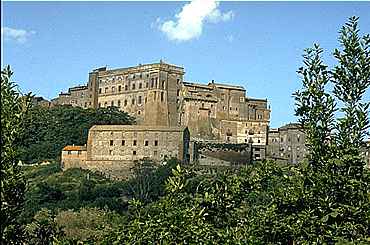 It is the Orsini family's hereditary fief. The Castle rises at the edge of this small town.
The residence's gardens were created by Vicino Orsini, the Duke of Bomarzo. He was born in 1528 and died in 1588. An educated humanist, he was interested in the Arts and was their patron. He devoted his life to the happiness of his House and his wife, Julia Farnese. After Julia Farnese's death, he created the plan for this garden.
He didn't call this garden a giardino, but Bosco Sacro, a Sacred Grove or Bosco dei Monstri, the Monsters' grove. Monster must be understood in the Latin meaning of monstrare, which means to show and demonstrate. This then means that from stop to stop, from stage to stage, each element is a component of an immense, very neoplatonic poem to his lost love. To create this garden, he called on one of the greatest landscapers and architects of his time, Pirro Ligorio.
It is the Orsini family's hereditary fief. The Castle rises at the edge of this small town.
The residence's gardens were created by Vicino Orsini, the Duke of Bomarzo. He was born in 1528 and died in 1588. An educated humanist, he was interested in the Arts and was their patron. He devoted his life to the happiness of his House and his wife, Julia Farnese. After Julia Farnese's death, he created the plan for this garden.
He didn't call this garden a giardino, but Bosco Sacro, a Sacred Grove or Bosco dei Monstri, the Monsters' grove. Monster must be understood in the Latin meaning of monstrare, which means to show and demonstrate. This then means that from stop to stop, from stage to stage, each element is a component of an immense, very neoplatonic poem to his lost love. To create this garden, he called on one of the greatest landscapers and architects of his time, Pirro Ligorio.
PIRRO LIGORIO (Naples ca. 1514 - Ferrara 1583)
When he was very young, he was the protégé of one of the greatNeapolitan families, that of the Caraffa princes. In fact, he was so well protected by the Princes of Caraffa that the rumormongers of his time and later, including myself, were convinced that he was the Caraffas' illegitimate child. As a little child, he liked to draw. He was allowed to draw. A fashionableteacher of the time was chosen: Polidorio da Caravaggio. In 1534, he went up to Rome and worked for the great Roman families, using thissophisticated trompe l'œil effect which was called "grotesque". He would work for the Roman Caraffas, the Orsinis, the Estes and even the Popes. He would do everything that was asked of him. He was encyclopedic. Frescoes, architecture, facade "remodeling", gardens and perspectives.
"An architect," he wrote, "is not a plebeian architect, a mason; he is a man who orders and defends everything to do with Art, and so must know philosophy, musical theory,symmetry, mathematics, astronomy, history, topography, analogy and perspective(...) he must know how to draw and paint."This description fits him very well. We are in his debt for some very important things: The Vatican's Belvedere Court which shelters, among others, Laocoön.

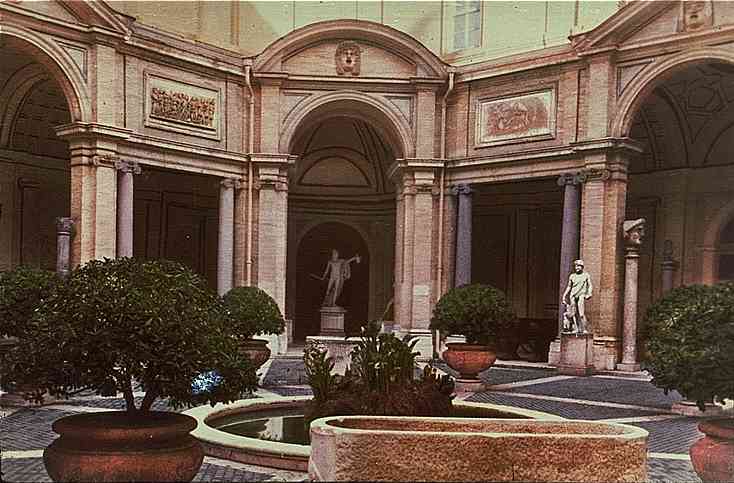 In Rome, he also created the Villa Julia's nymph grotto.
In Rome, he also created the Villa Julia's nymph grotto.

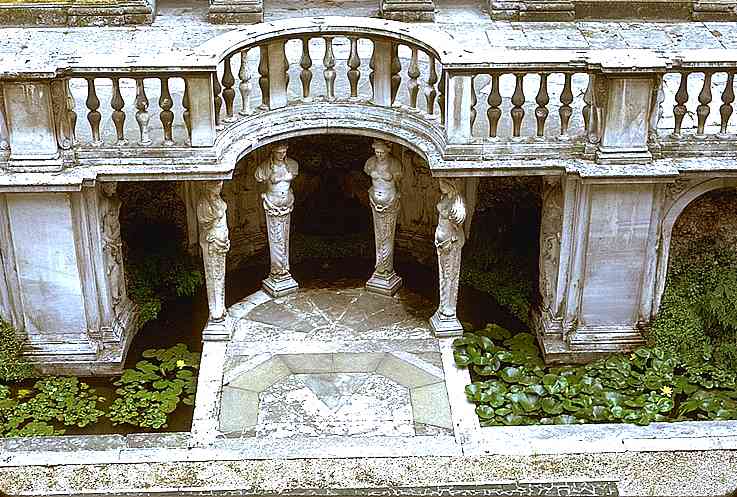 At the same time, he also assuaged his erudite's and specialist's curiosity about Antiquity. In 1549, at the request of Ippolito d'Este, he began the excavation of Hadrian's villa in Tivoli. In 1553, he published the Book of Antiquities. He became more and more well-known, and, as he was just as much a sketcher as a painter, a painter as a sculptor, an ornamentalist as a hydraulic engineer and a landscaper, he was commissioned to create more and more gardens. Vicino Orsini thus called on him to create Bomarzo. An excerpt from the "Book of Antiquities" on the meaning of his work inBomarzo:
At the same time, he also assuaged his erudite's and specialist's curiosity about Antiquity. In 1549, at the request of Ippolito d'Este, he began the excavation of Hadrian's villa in Tivoli. In 1553, he published the Book of Antiquities. He became more and more well-known, and, as he was just as much a sketcher as a painter, a painter as a sculptor, an ornamentalist as a hydraulic engineer and a landscaper, he was commissioned to create more and more gardens. Vicino Orsini thus called on him to create Bomarzo. An excerpt from the "Book of Antiquities" on the meaning of his work inBomarzo:" "... Although the 'grotesques' appeared fantastic or profane, they were all ingenious symbols or objects, created not without some mystery... Some of the forms are so fantastic that one thinks one is dreaming -- the moral andfabulous attributes of the gods have been brought together there... They were found by chance, neither for the purposes of the fantastic, nor to show bizarre and demented objects, nor to use their variety as a decorative scheme, to transform the houses into spots of delight... They were created to provoke stupefaction and wonderment in miserable mortals, to illustrate the fecunditythe fulfillment of intelligence and its imaginative qualities to the utmost... And to show how life manifests itself, to enhance the proliferation of themesborn of created objects...""He designed the gardens of the Villa d'Este for Ippolito d'Este
PIRRO LIGORIO (Naples ca. 1514 - Ferrara 1583)
All the Italian princes came to visit, as did innumerable foreign travelers. Unfortunately, as with most of the Renaissance gardens, the work was neglected. When it was revisited in the beginning of this century, it was overgrown with trees, everything was half collapsed, all of which merely gave the garden an even more fantastic aspect. It was at this time that André Pieyre de Mandiargue visited and wrote a sublime treatise on the sleeping garden of Bomarzo. Salvador Dali and Cocteau, the surrealists, discussed it at great length. Bomarzo is in fashion. Bomarzo is coming back to life.
Five kilometers from Viterbo on Route 205. Since the 13th century, Bagnaia had been the personal fief of the bishops of Viterbo. The Villa Lante was thus not created by lay princes such as Orsini or Gonzagues, but by men of the Church. As you will see, the tone does not change. The Villa Lante is the work of two bishops of Viterbo who succeeded each other on the city's episcopal throne. The first was Gian Francesco Gambarra, the second, Alessandro Montalto. According to the chroniclers of the time, the former was learned but lived simply. The latter, a cardinal at the age of seventeen, was the nephew of Pope Sixtus V. The combination of Gambarra, a mature man, and Montalto, an adolescent, would produce one of the strangest Italian villas and one of the strangest Italian parks. To create this work, Gambarra called on one of the great architects of his era, Giacomo Barozzi, known as "Il Vignola". Il Vignola worked in close collaboration with an acclaimed specialist,Pirro Ligorio, to deliver yet again a sort of initiatory path with surprises and shocks. A hydraulics specialist had to be added, a man from Sienna called Thomaso Chiruchi. It was he who adjusted the waterworks to perfection. It should be noted that after having been the episcopal see, the villa was sold to the Duke of Lante in the 17th century. The villa was described by Montaigne. It was one of the residences he explored during his trip to Italy.
The Villa d'Este is the most famous of all the Renaissance and Mannerist residences in Europe. One might well ask why. It is not that much bigger or more luxurious than the Villa Lante, not that much more stunning than Bomarzo. It is perhaps because of the famous guests who resided at the Villa d'Este. In the 19th century, the Cardinal of Hohenzollern allowed his best friend to stay there. This friend was Franz Liszt. Liszt would come to Tivoli regularly, over a period of four years. There, he composed the famous "Jeux d'Eaux à la Villa d'Este". During the 18th century, Hubert Robert and Fragonard accompanied the Abbot of Saint-Nom on his Italian voyage. These two artists sketched the most beautiful drawings to be found of the countryside. A century earlier, de Brosse wrote his most vibrant letters on Italian taste while residing there. Naturally, Montaigne visited the Villa d'Este. The Villa d'Este was commissioned and built by Cardinal Ippolito d'Este. Born in 1509, he was a man of the 16th century and the Mannerist generation. His roots were already Mannerist: he was the son of Lucrezia Borgia and the grandson of Pope Alexander VI. We can speak of Mannerist expressionism. He was the only Cardinal who could say that he was the grandson of the Pope. It would seem that he never missed an opportunity to do so. Lucrezia was Alexander VI's daughter. He arranged her marriage to Alfonso I, duke of Ferrara. Ippolito was the son of Lucrezia and Alfonso I. Ippolito d'Este was a bishop at the age of two, an archbishop at the age of ten and a cardinal at thirty. At the age of forty-one, he came close to becoming Pope. A meteoric career. The papal throne was wrested from him by Julius III. A dreadful rivalry existed between Ippolito and Julius III. The success of the latter brought about the former's exile. Julius III immediately sent him packing by naming him the Governor of Tivoli. This was extraordinarily clever of him: a governor could not leave the province he governed. He thus imprisoned him in Tivoli, and the cardinal spent the last twenty years of his life there. From 1550 until his death in 1572, one of the most erudite, cultured, intelligent and disconcerting men in Europe created his dream world: the most fabulous Mannerist garden. The garden of the Villa d'Este. Some excellent artists worked at the Villa d'Este. Pirro Ligorio collaborated with Ippolito for seventeen years. Thomaso Chiruchi, the best hydraulic engineer of the 16th century. Claude Venard, a Burgundian, the most extraordinary manufacturer of hydraulic organs in the world. Three very good painters, Federico Zuccaro, Livio Agresti and Girolaio Luchiano. We are in Tivoli, very near Rome. The countryside is beautiful. A modest villa, small and austere, stands in the center of the town of Tivoli, its main courtyard simply paved with black, white and red stones and a small, fake grotto, discreet, a sleeping Ariadne...
